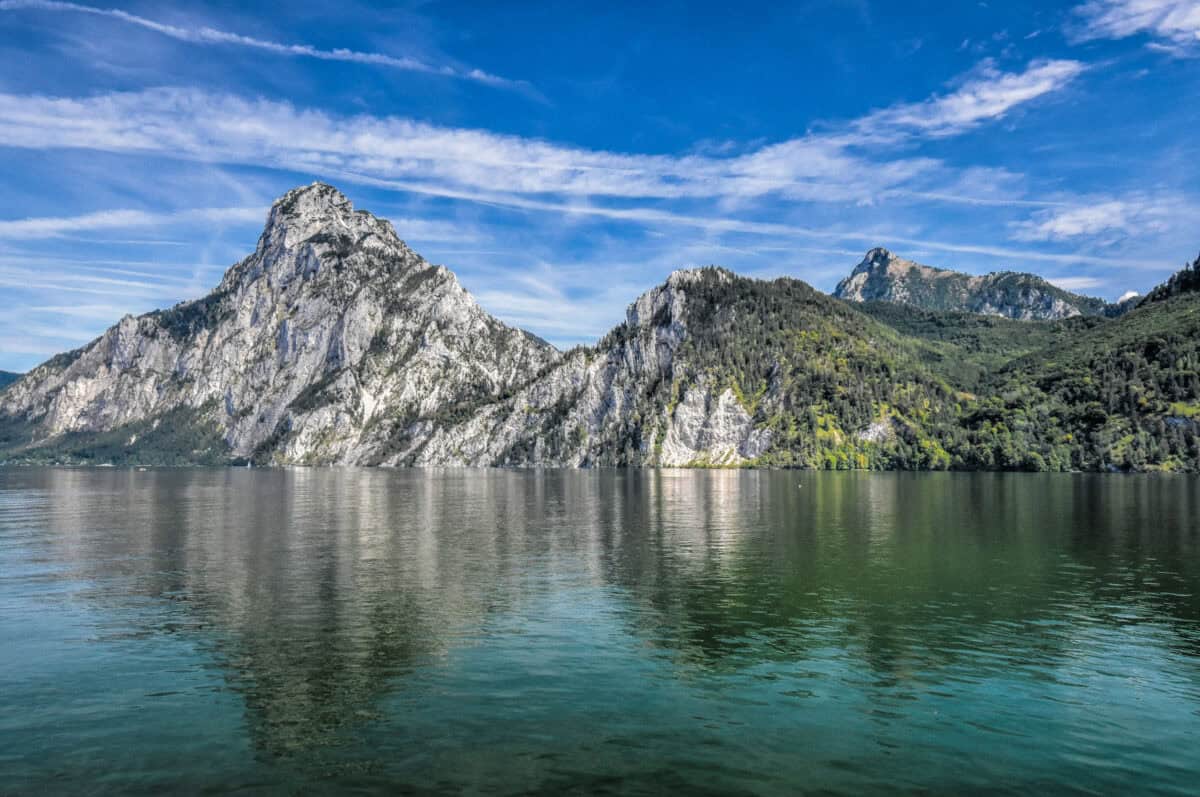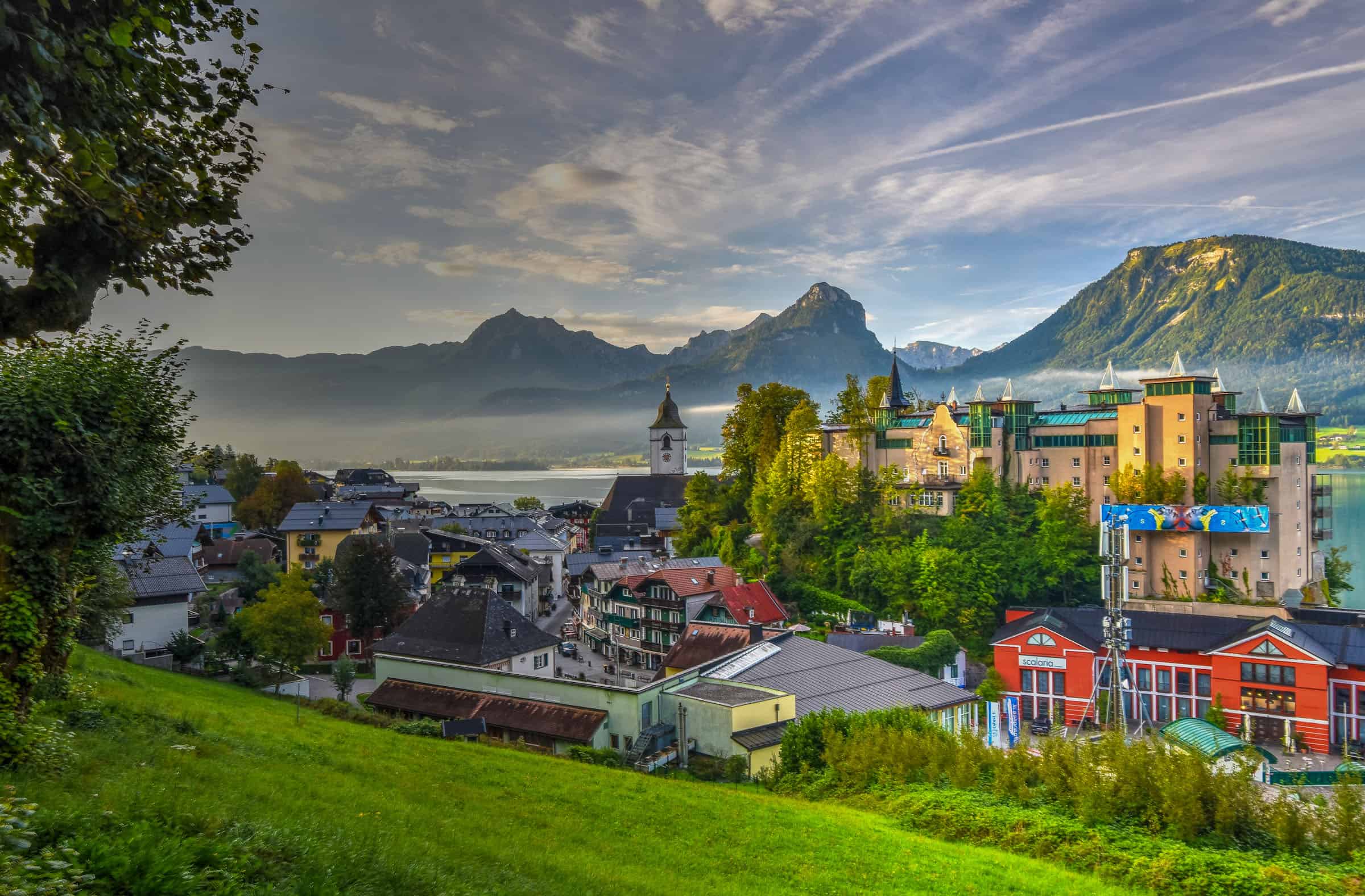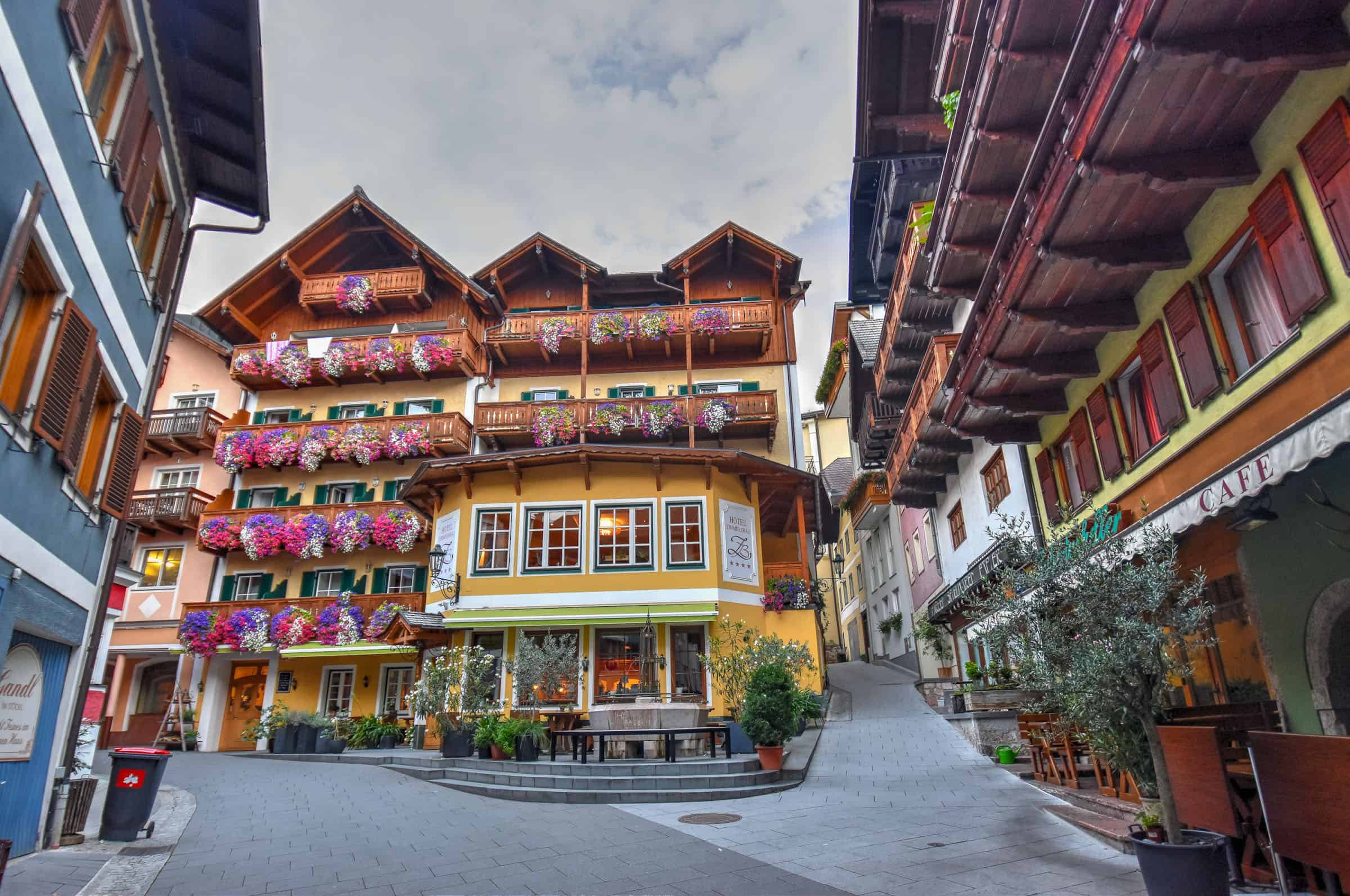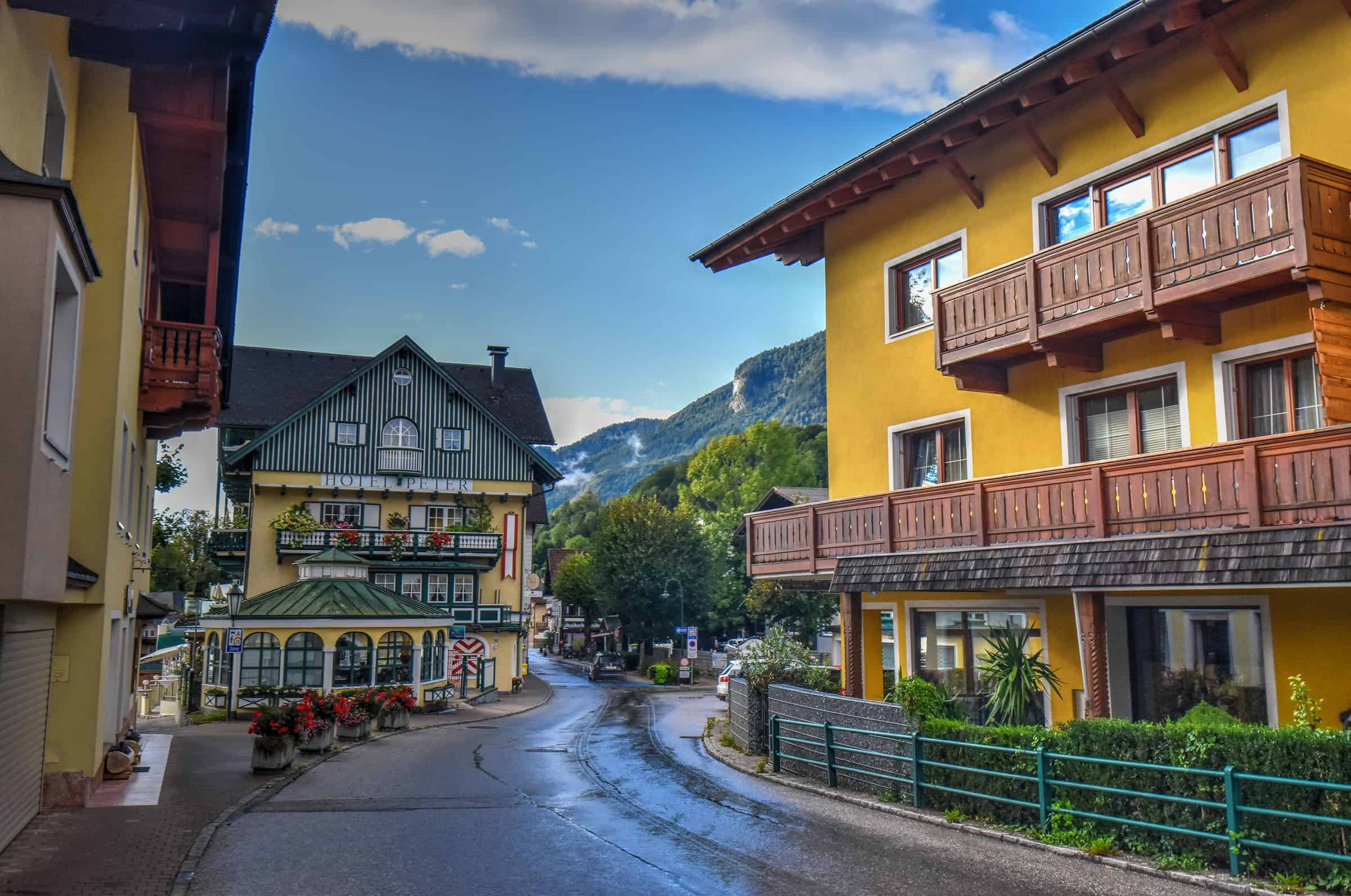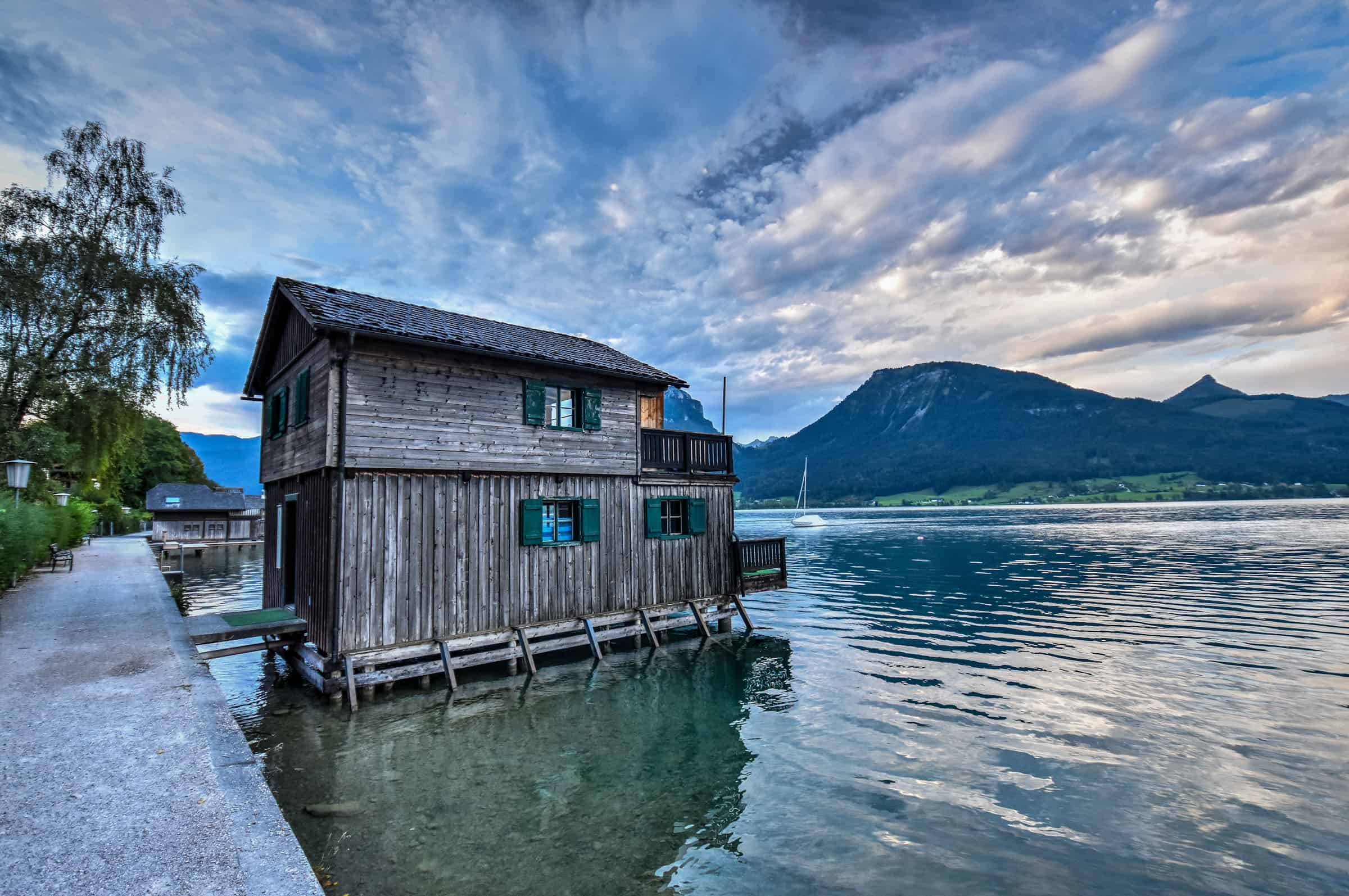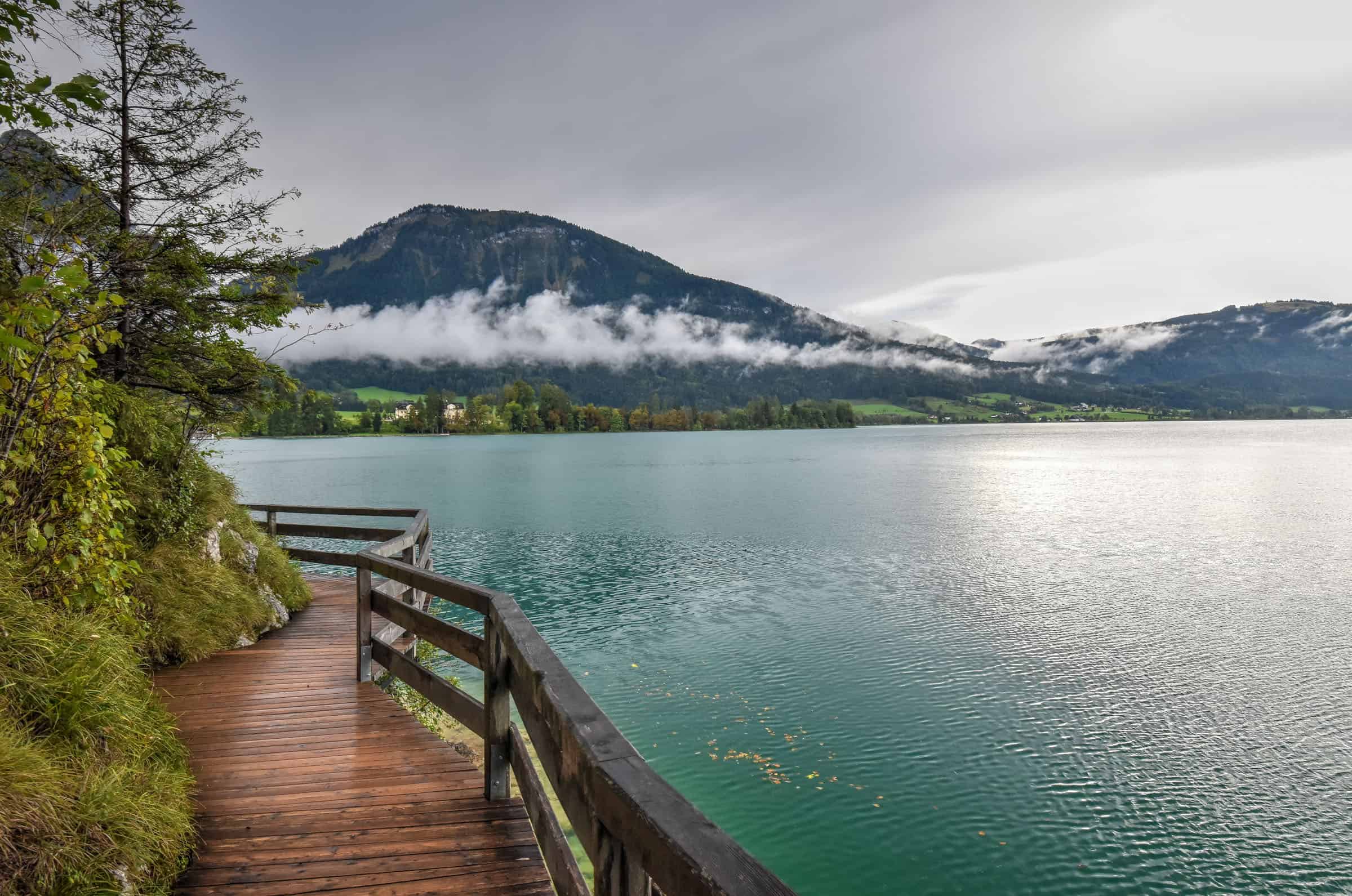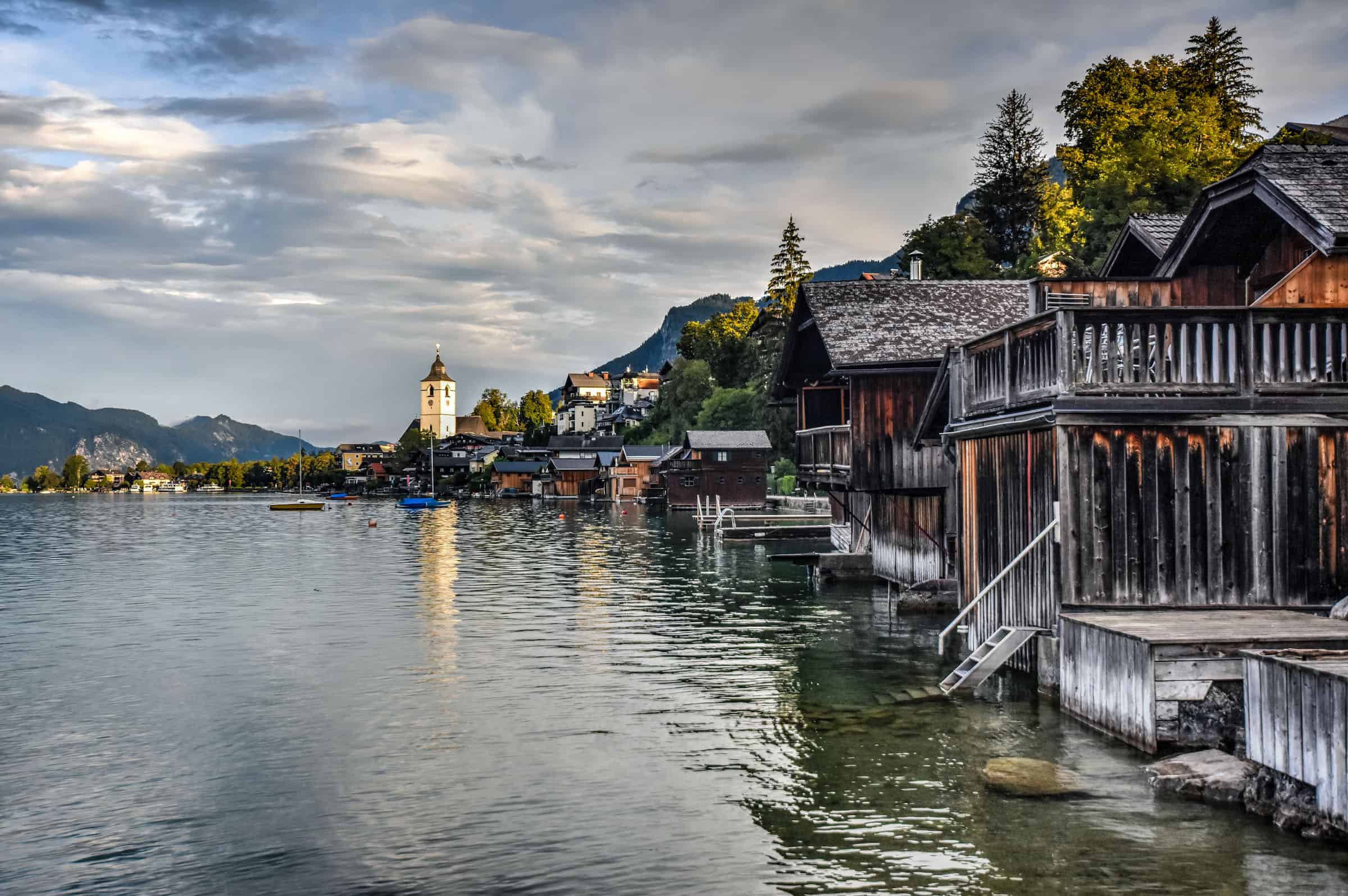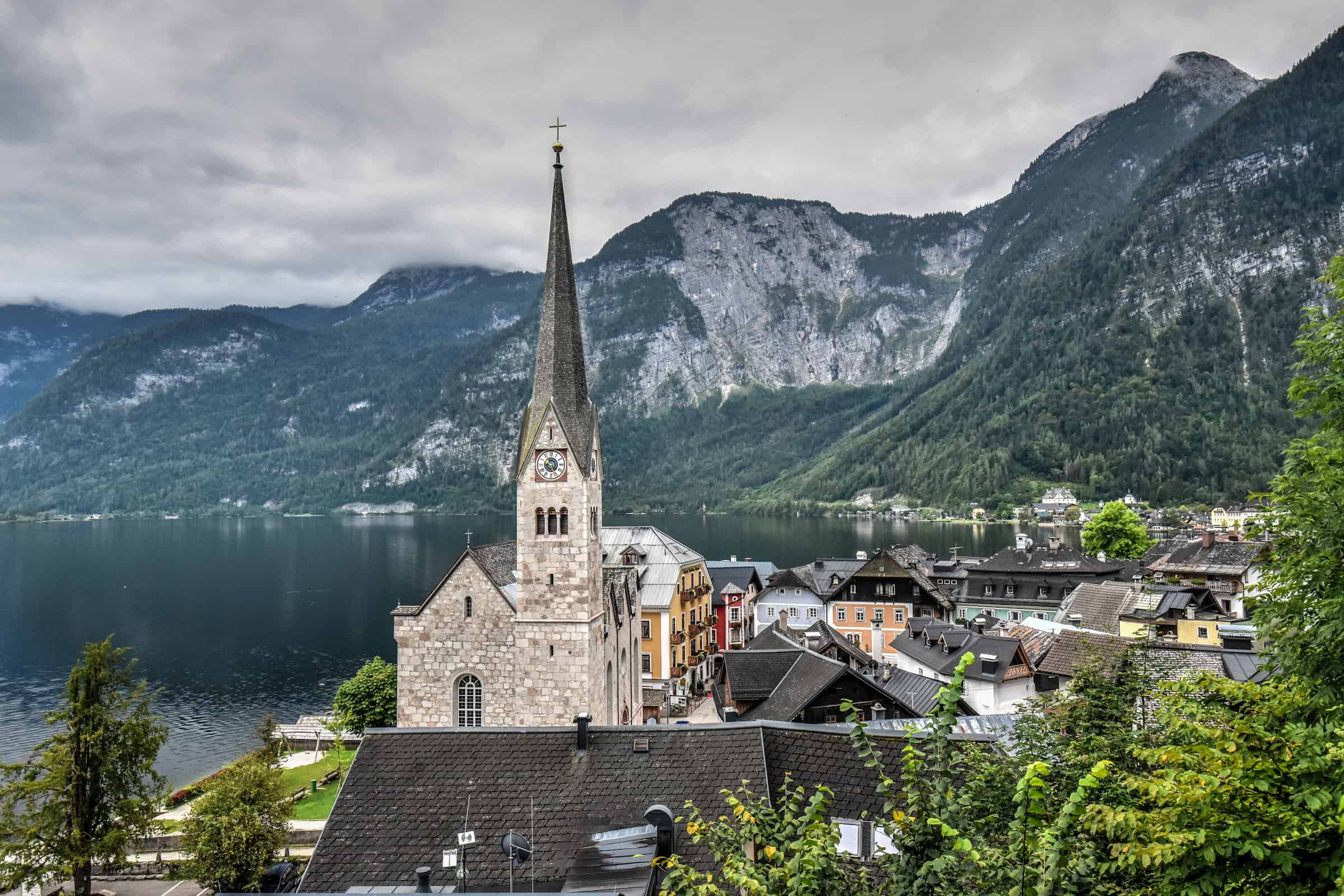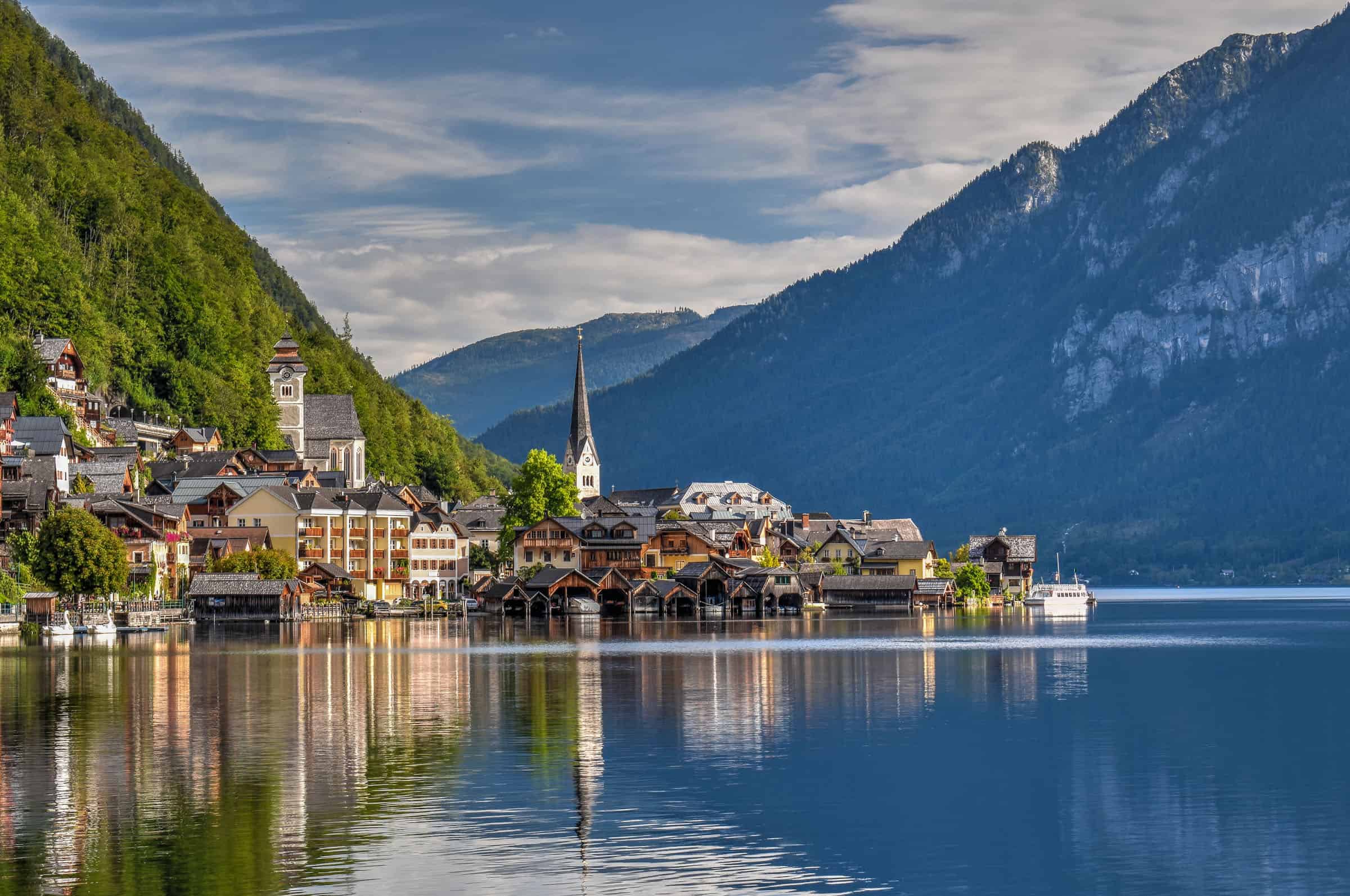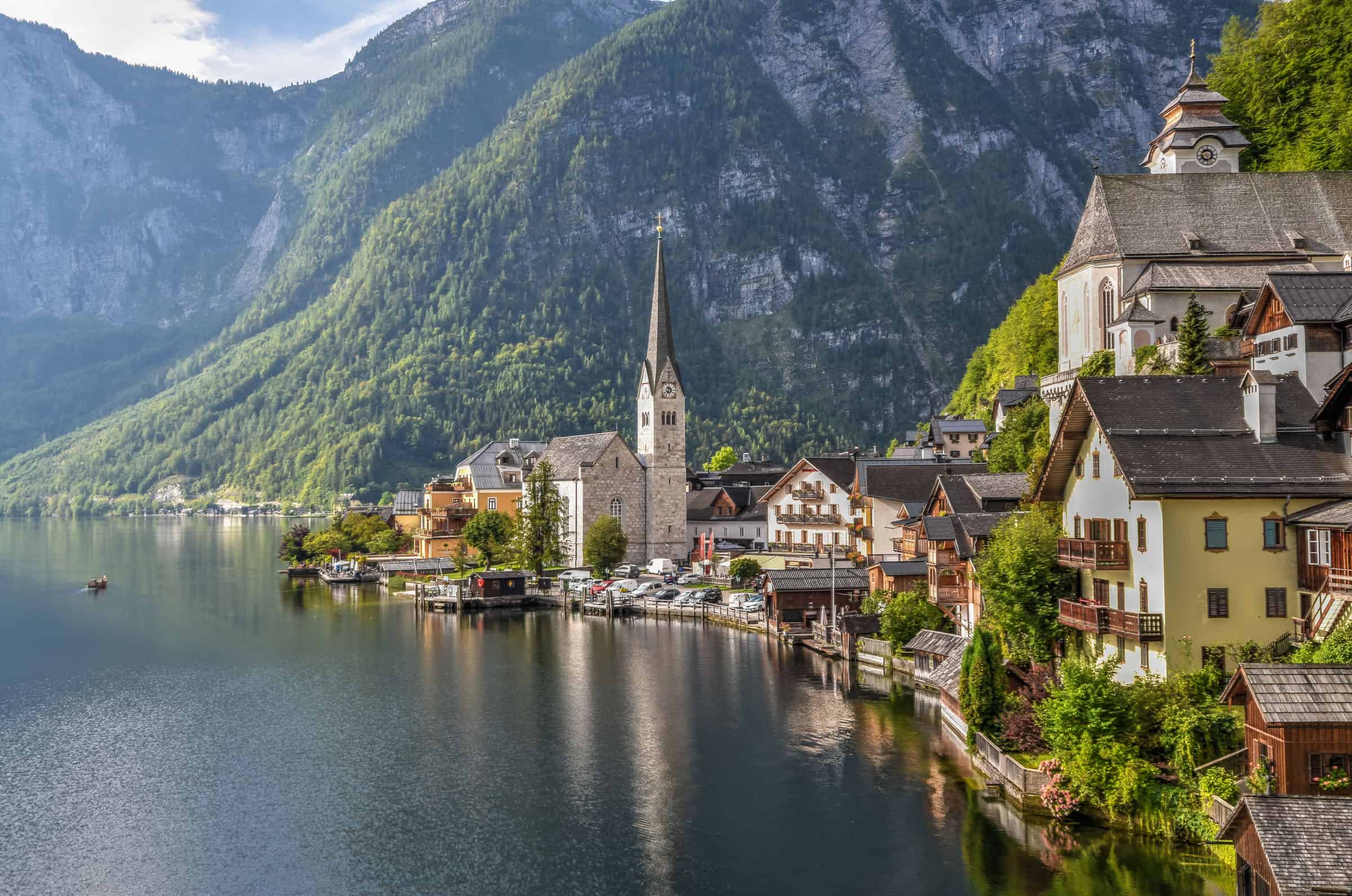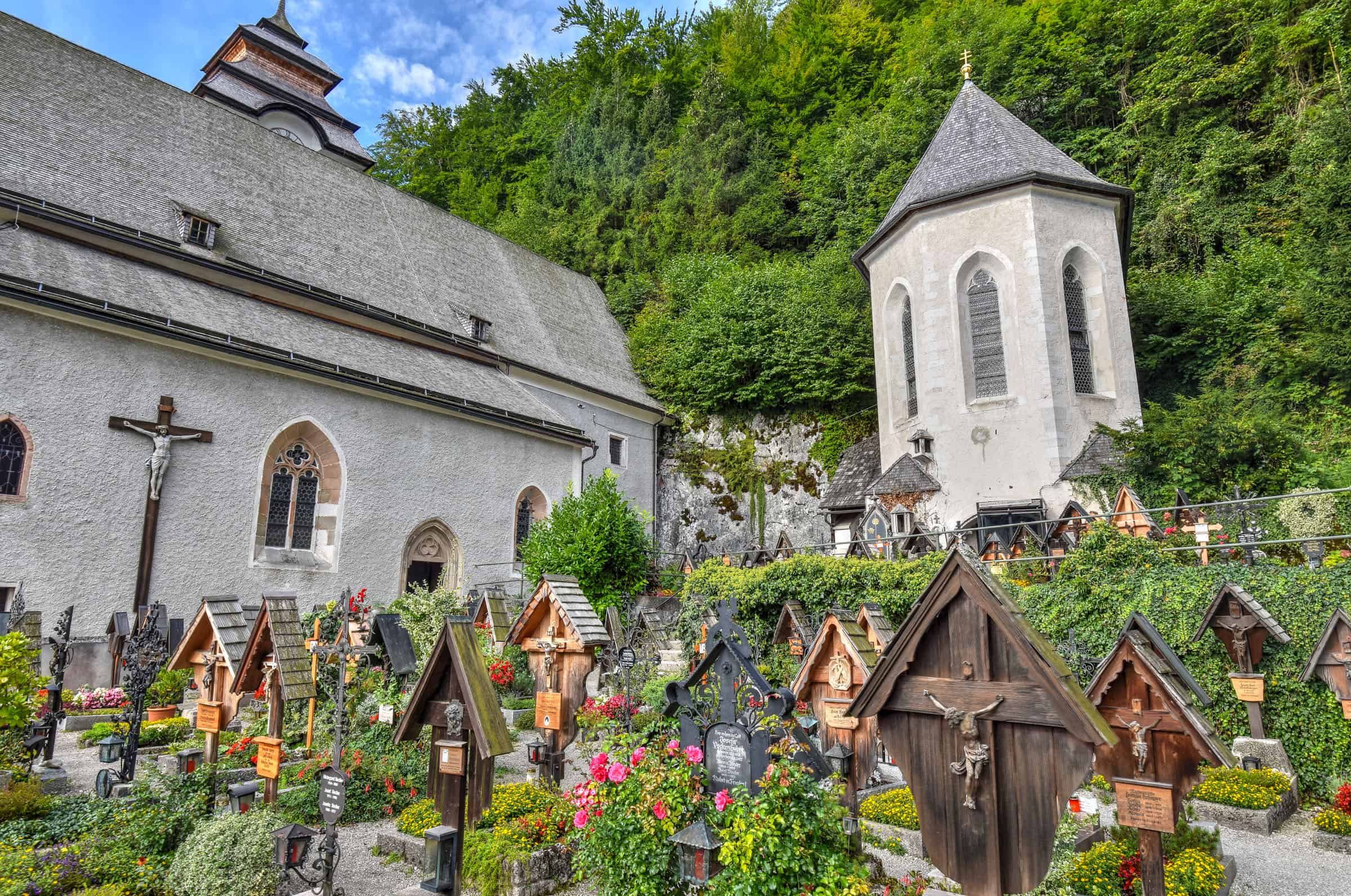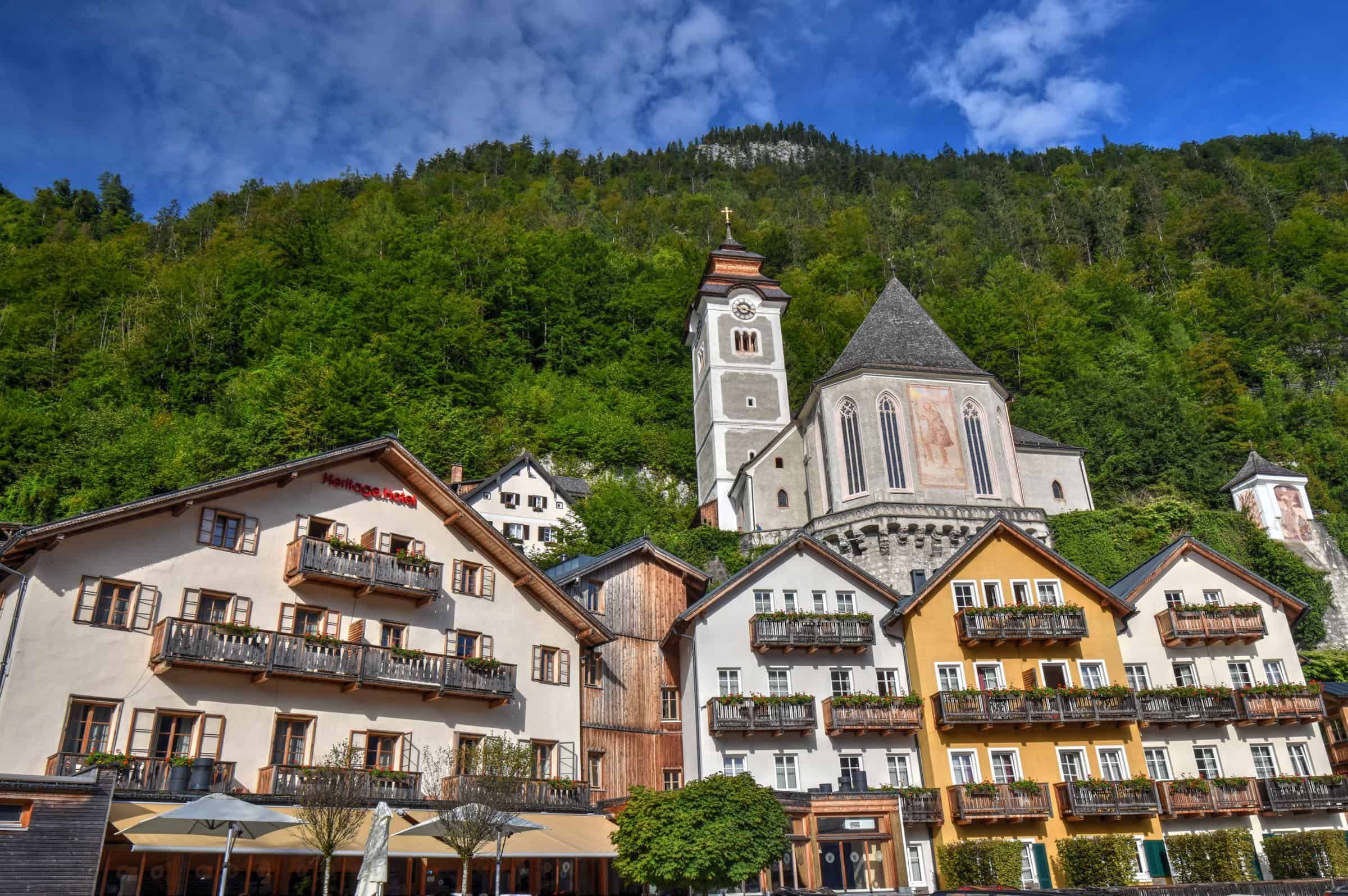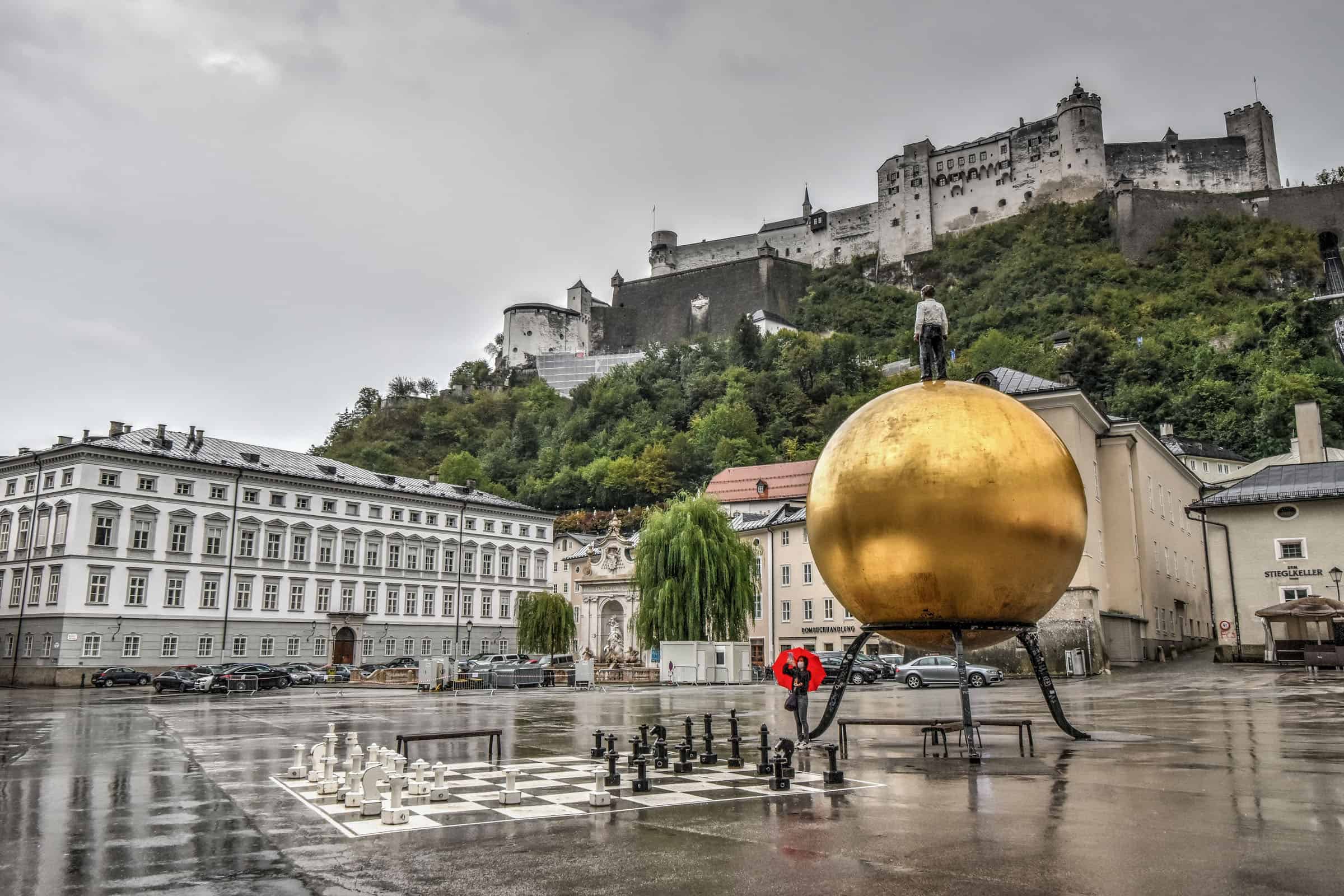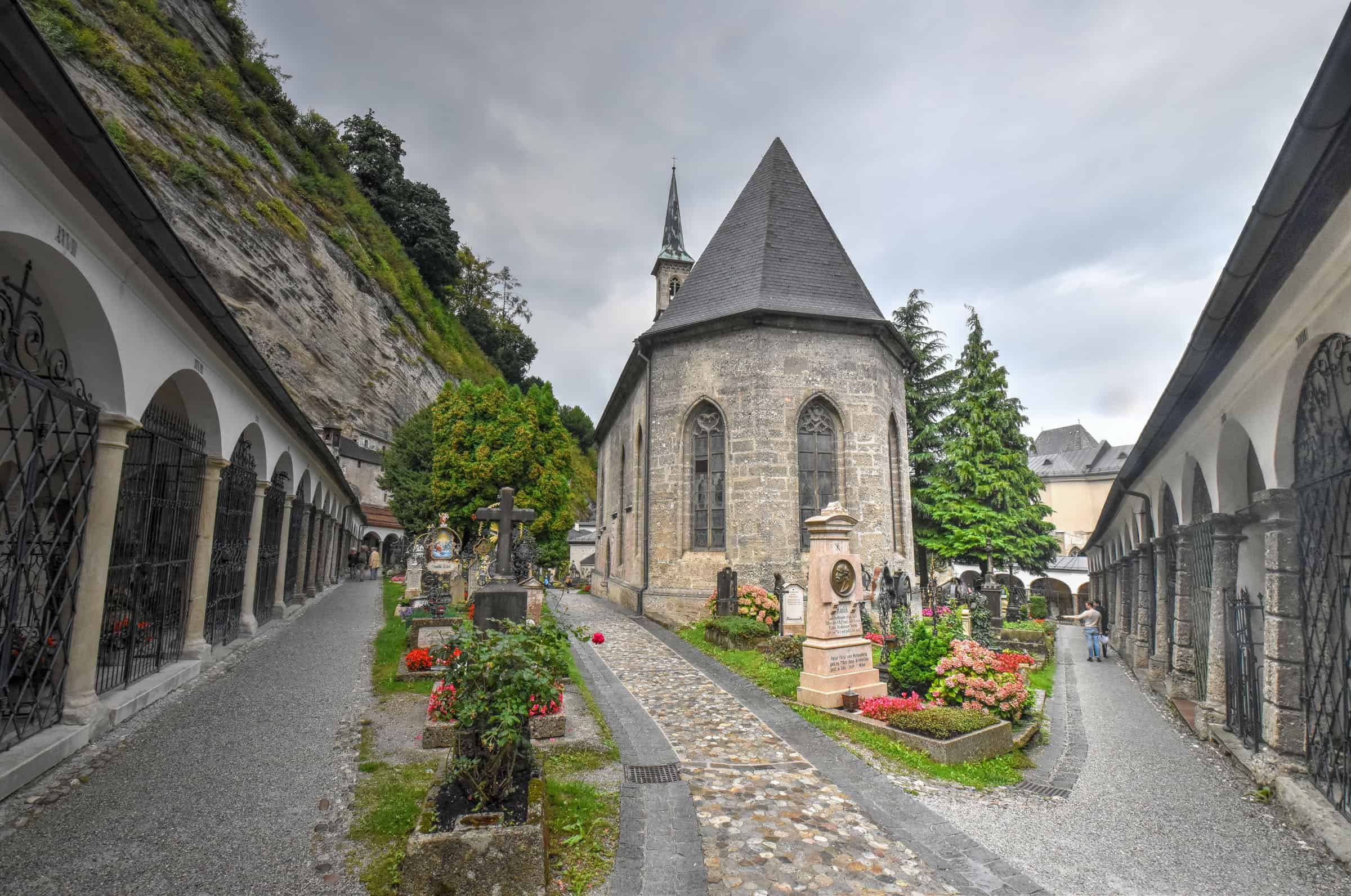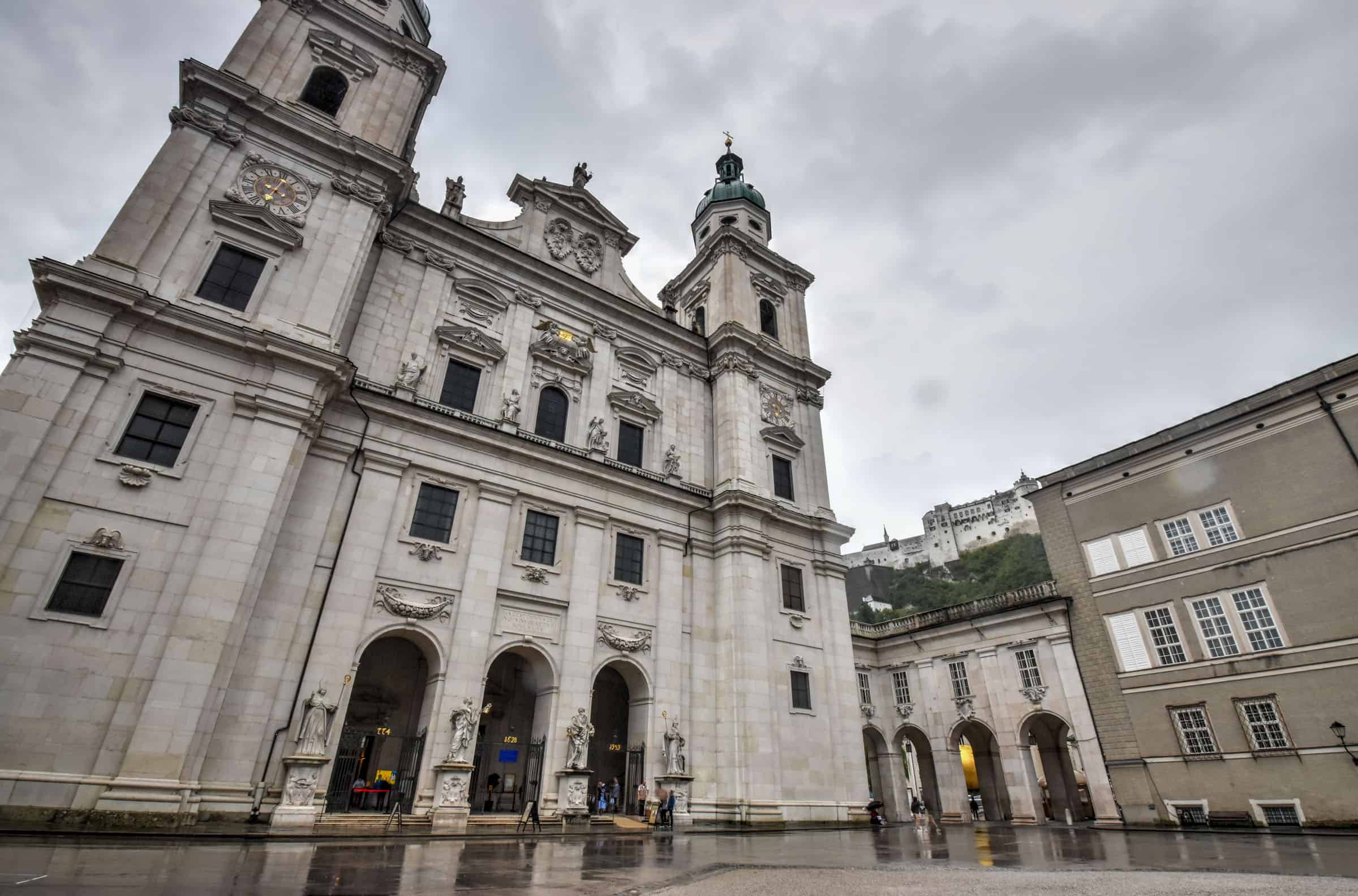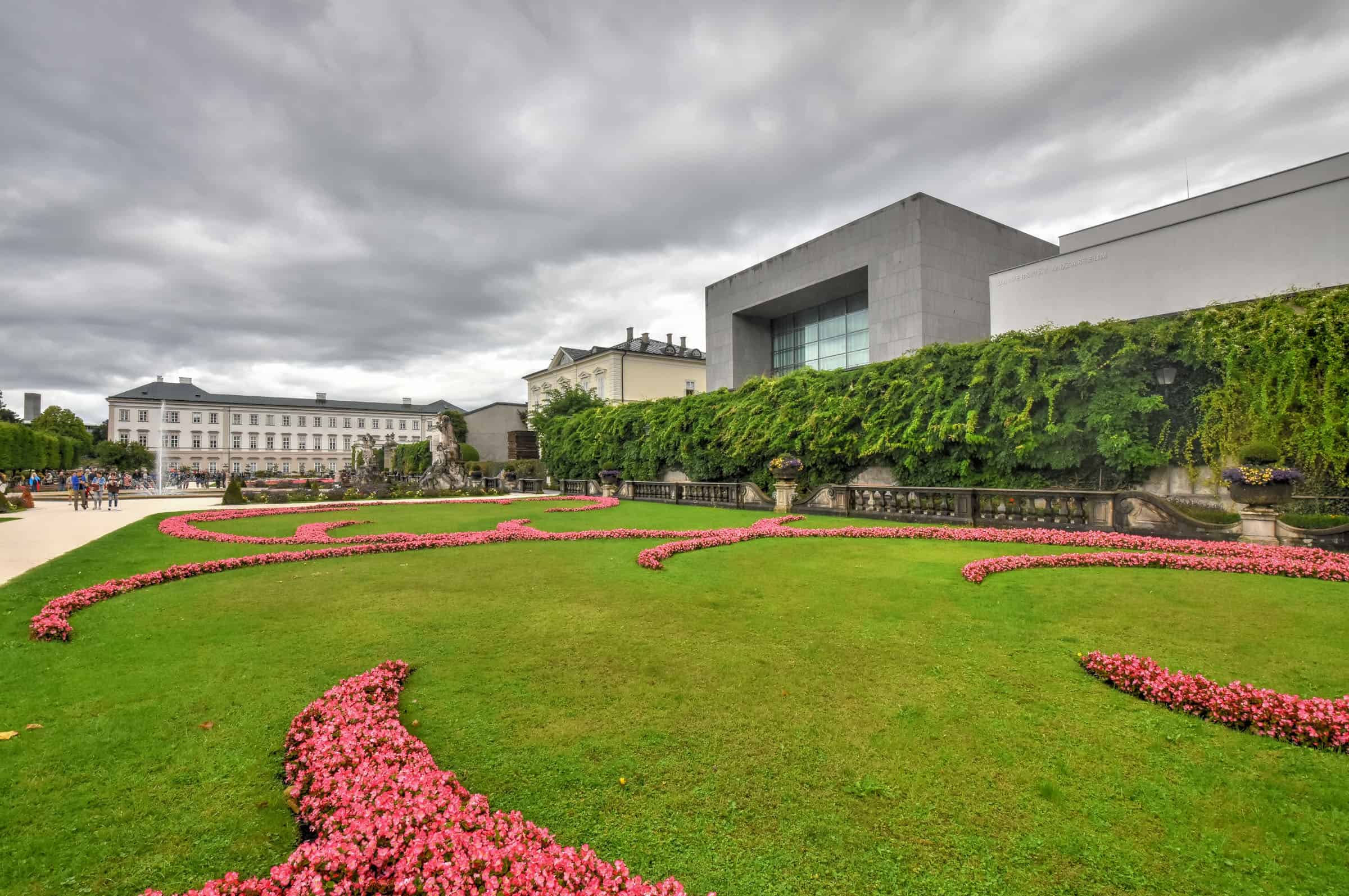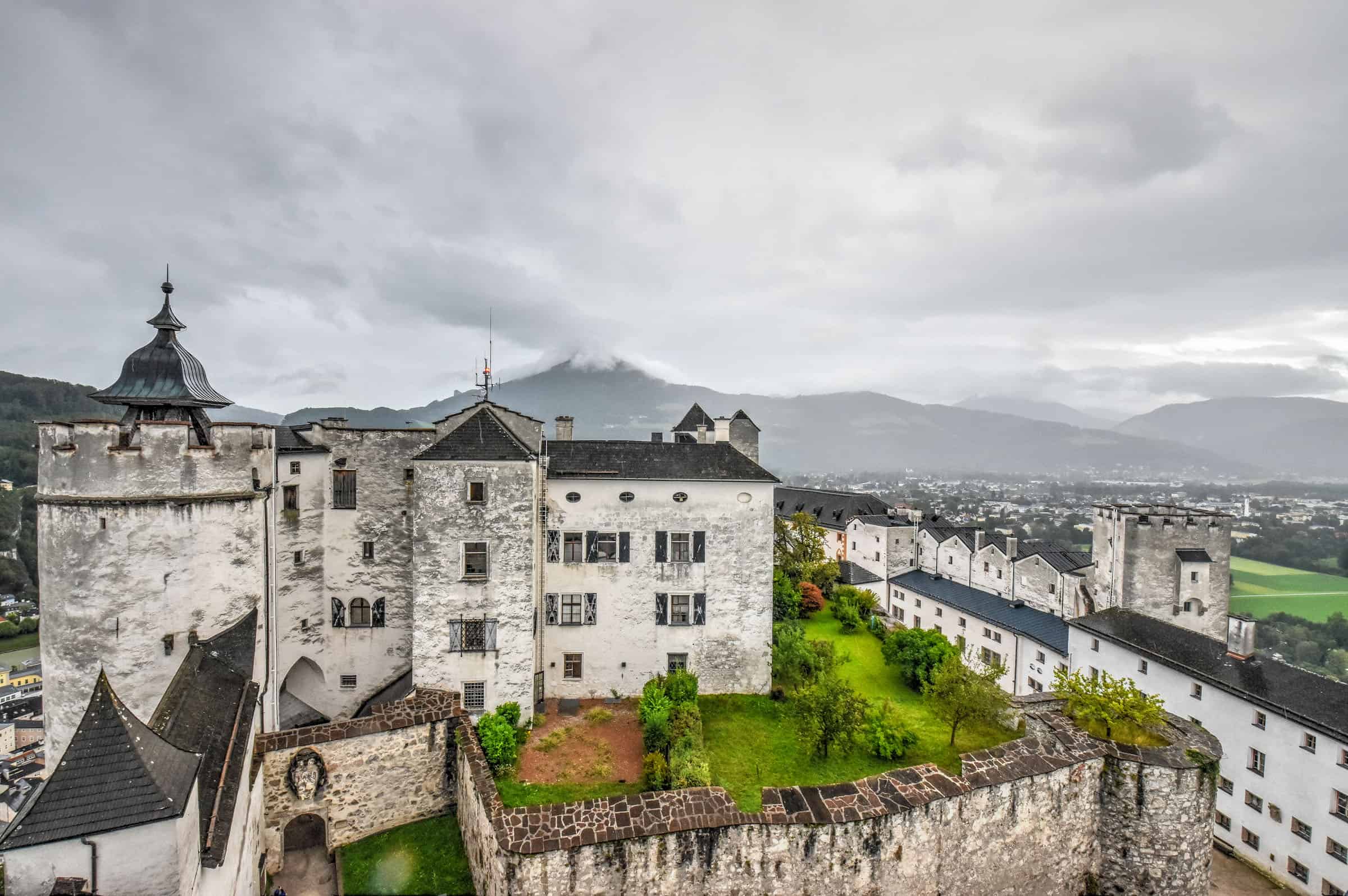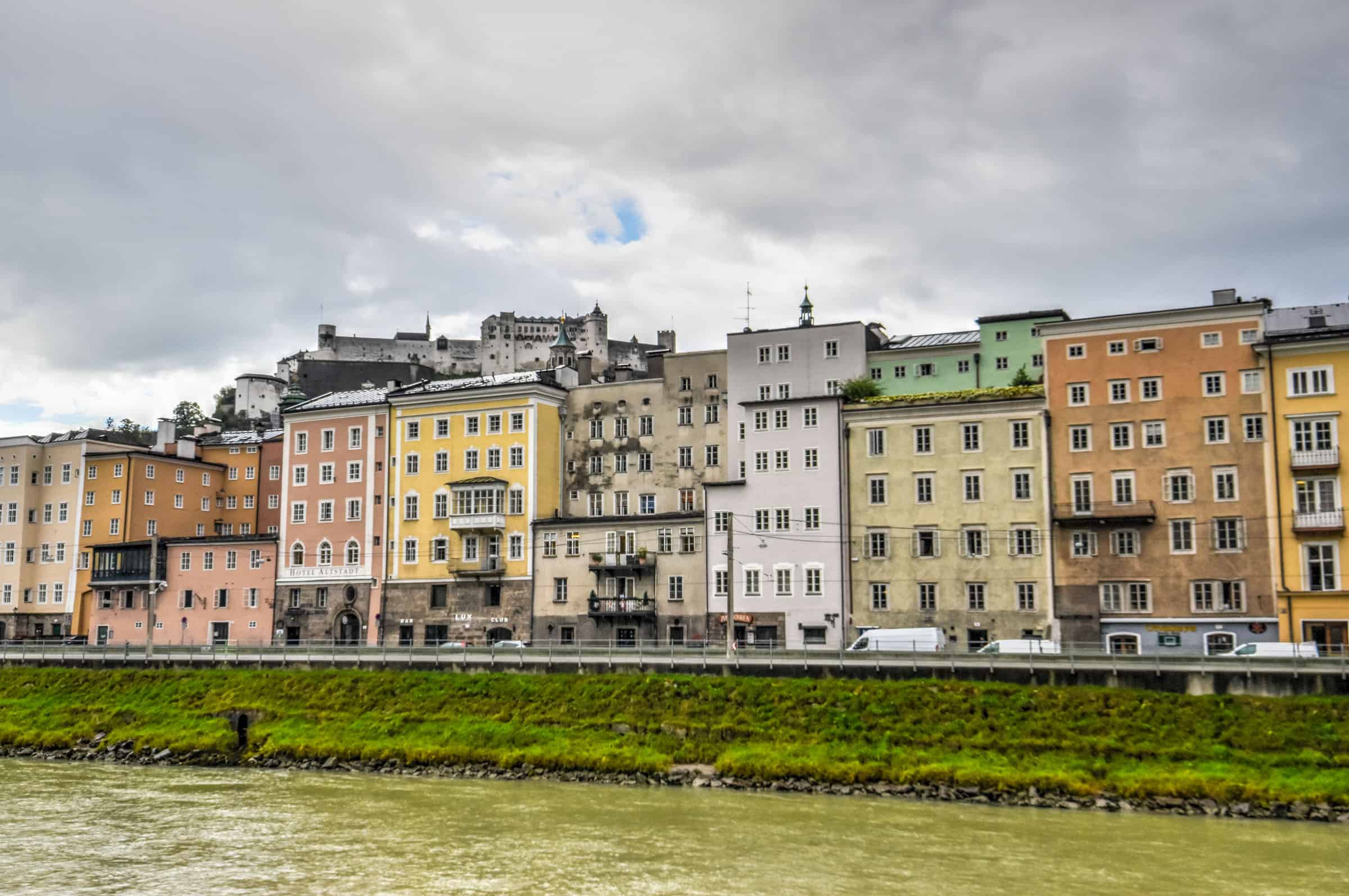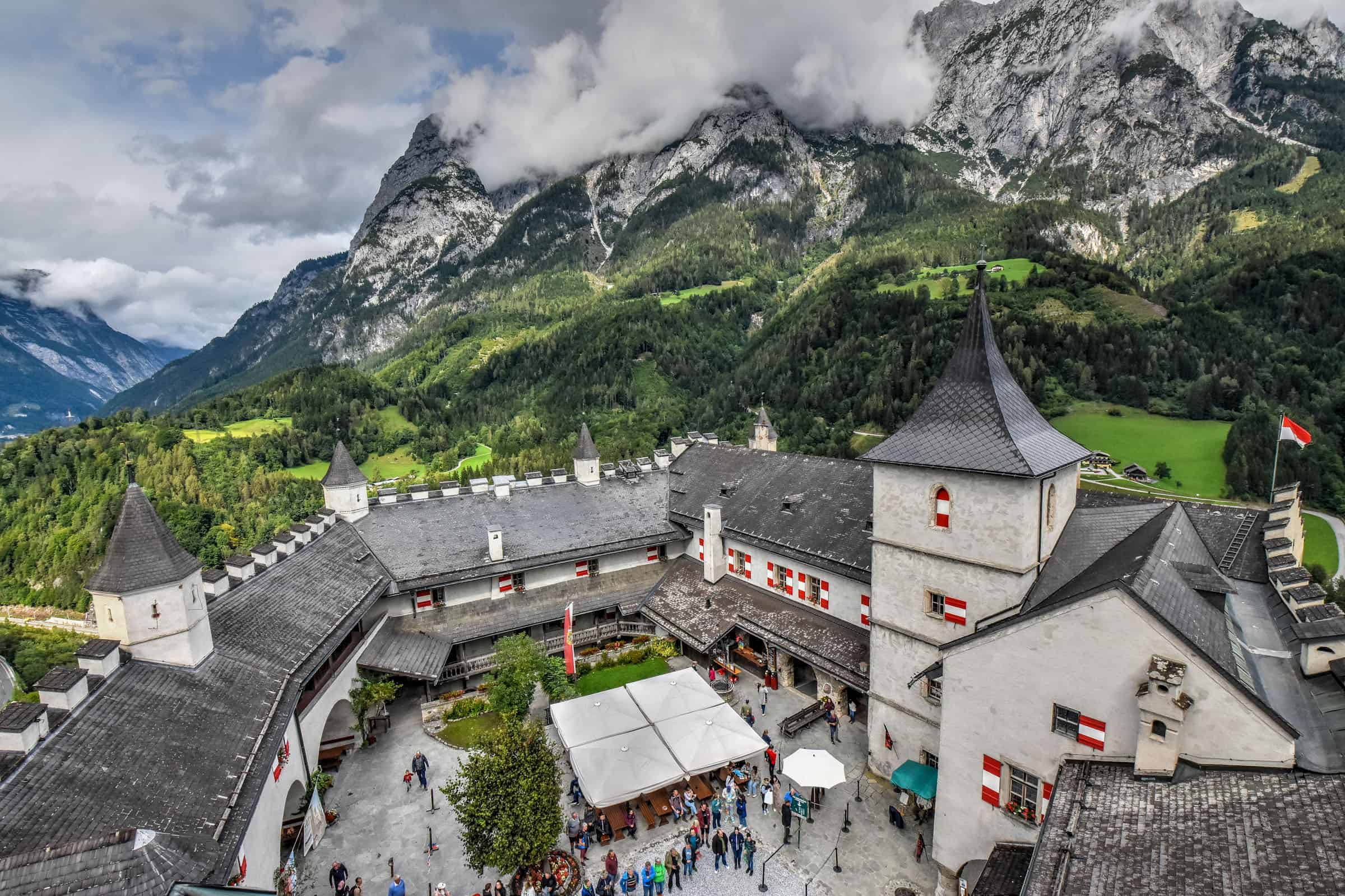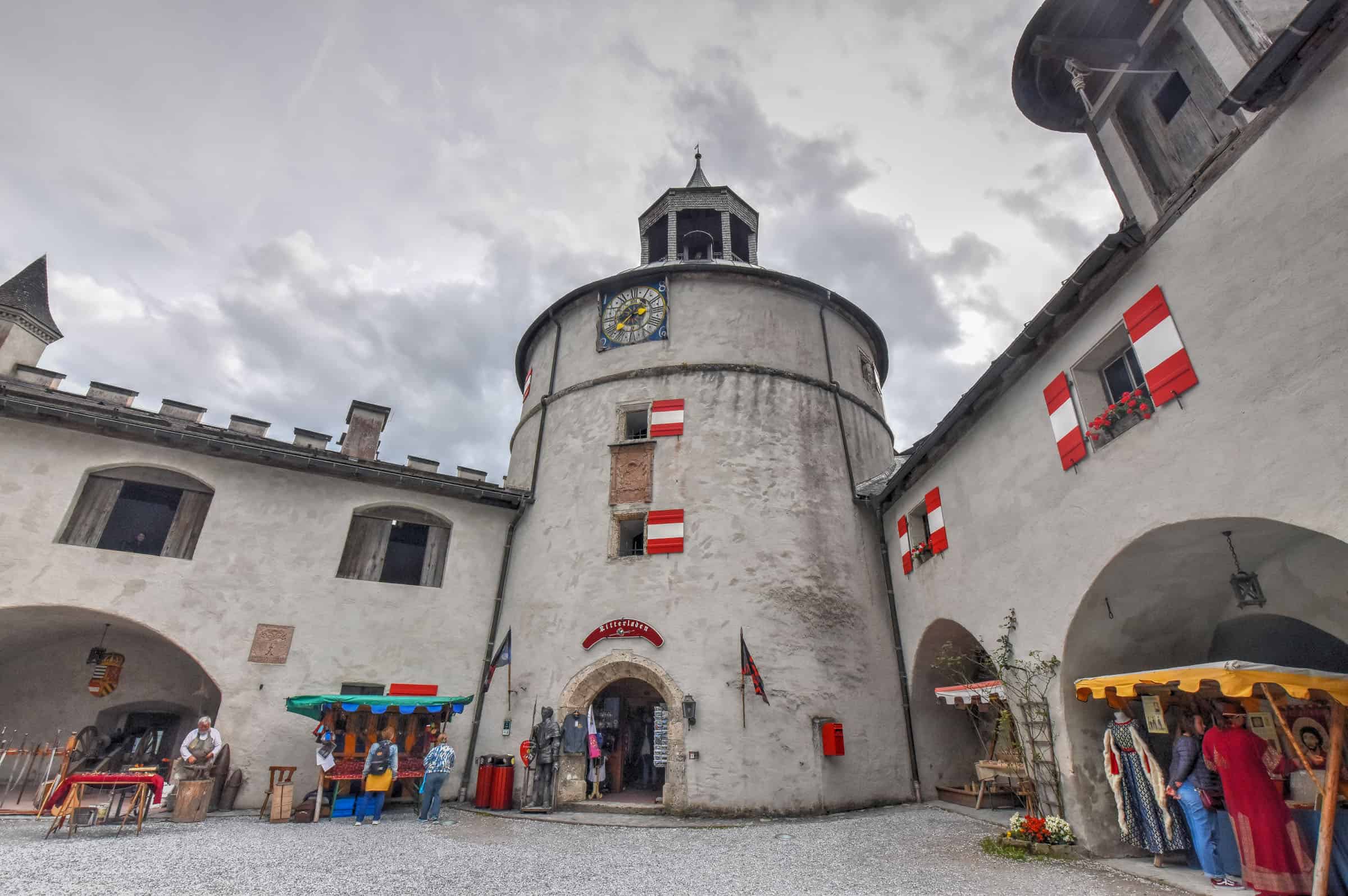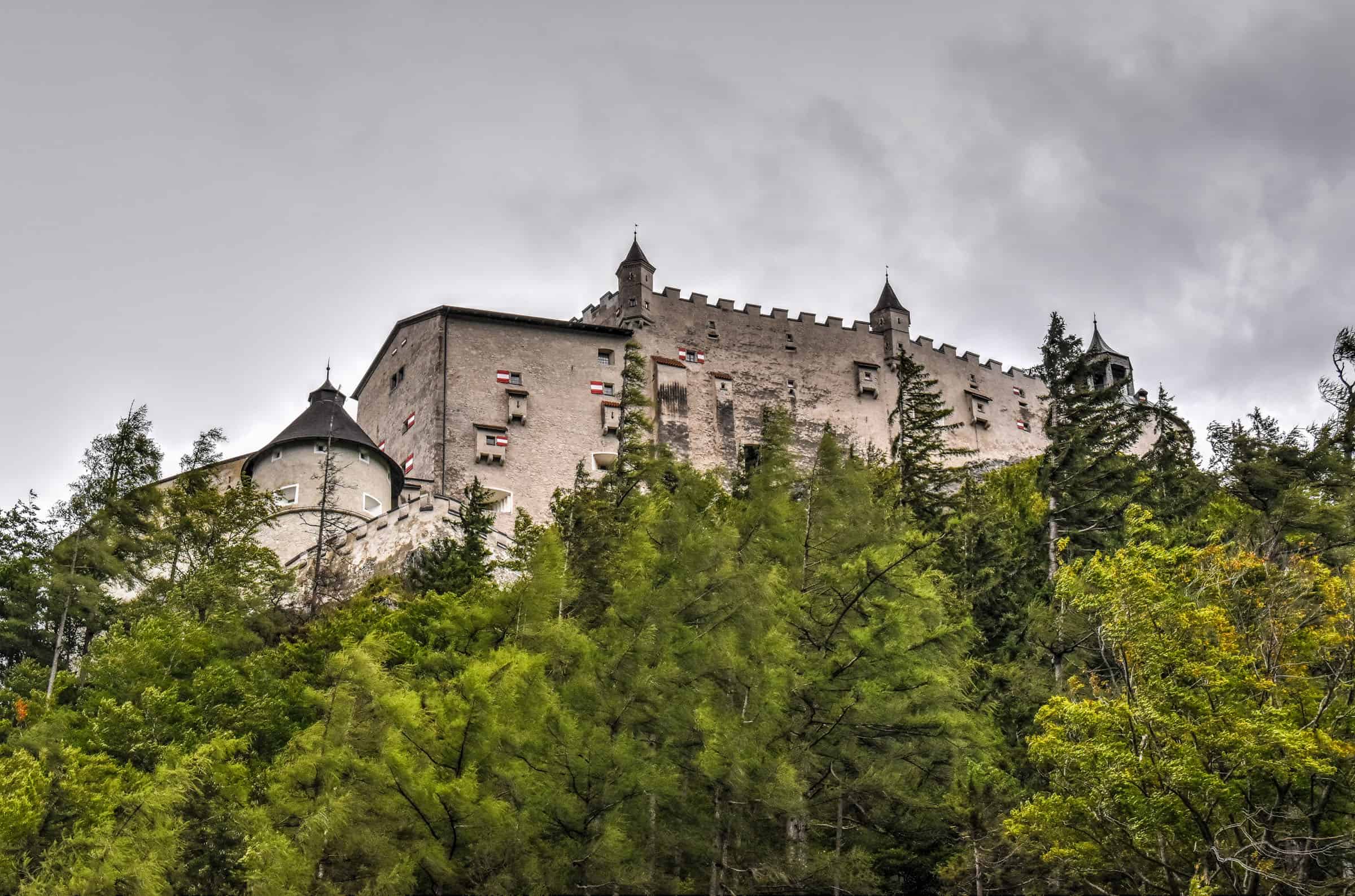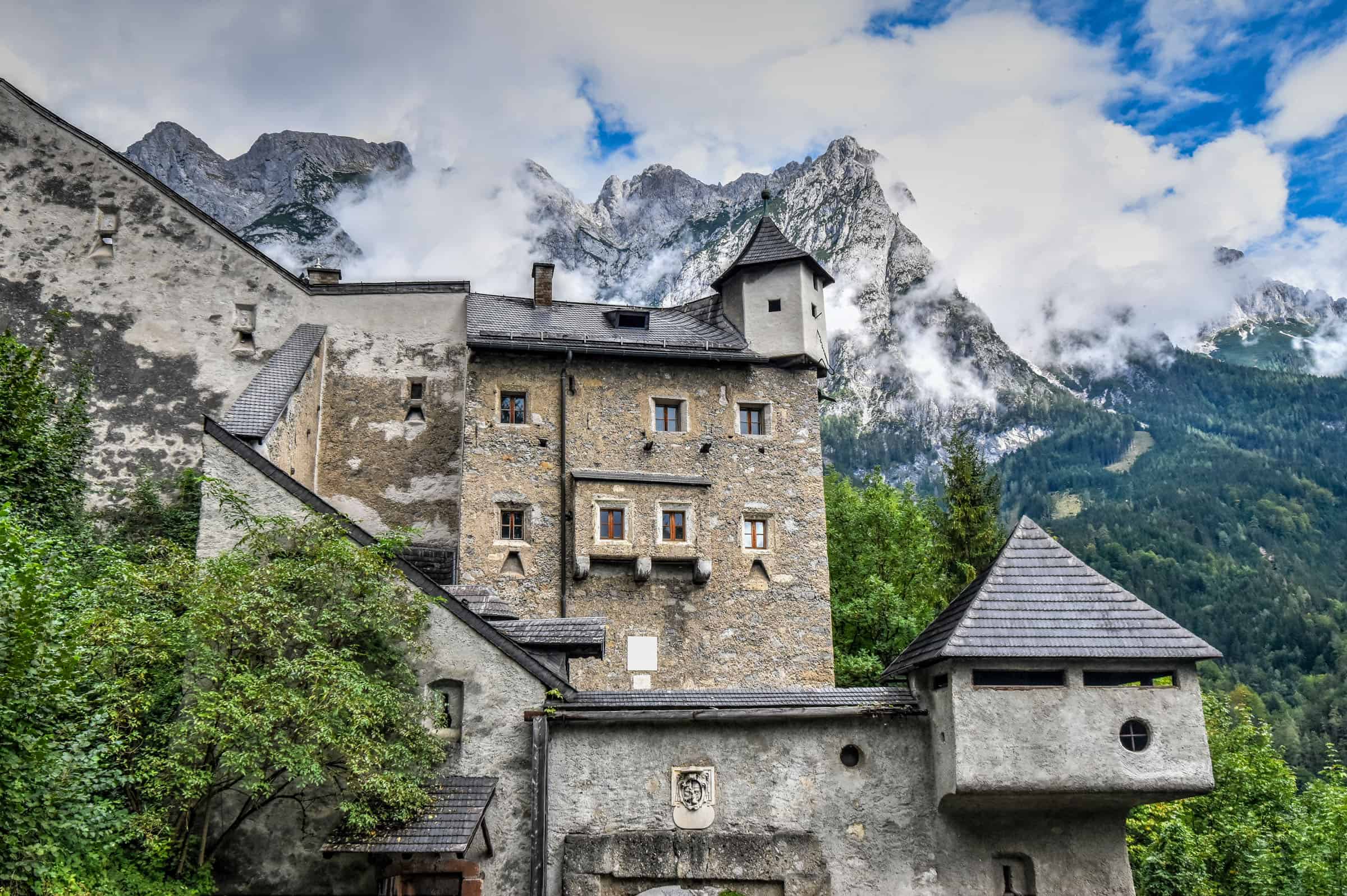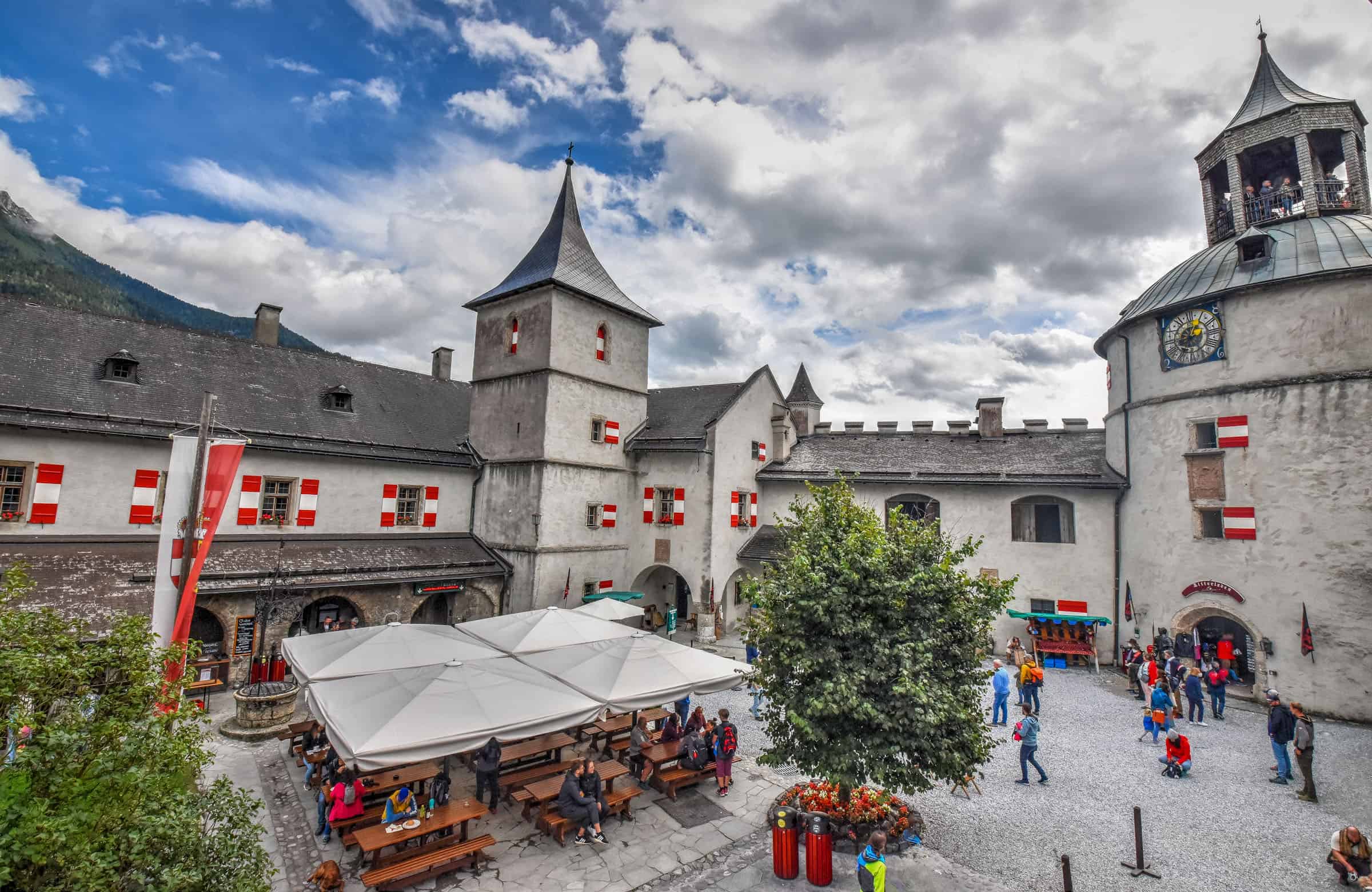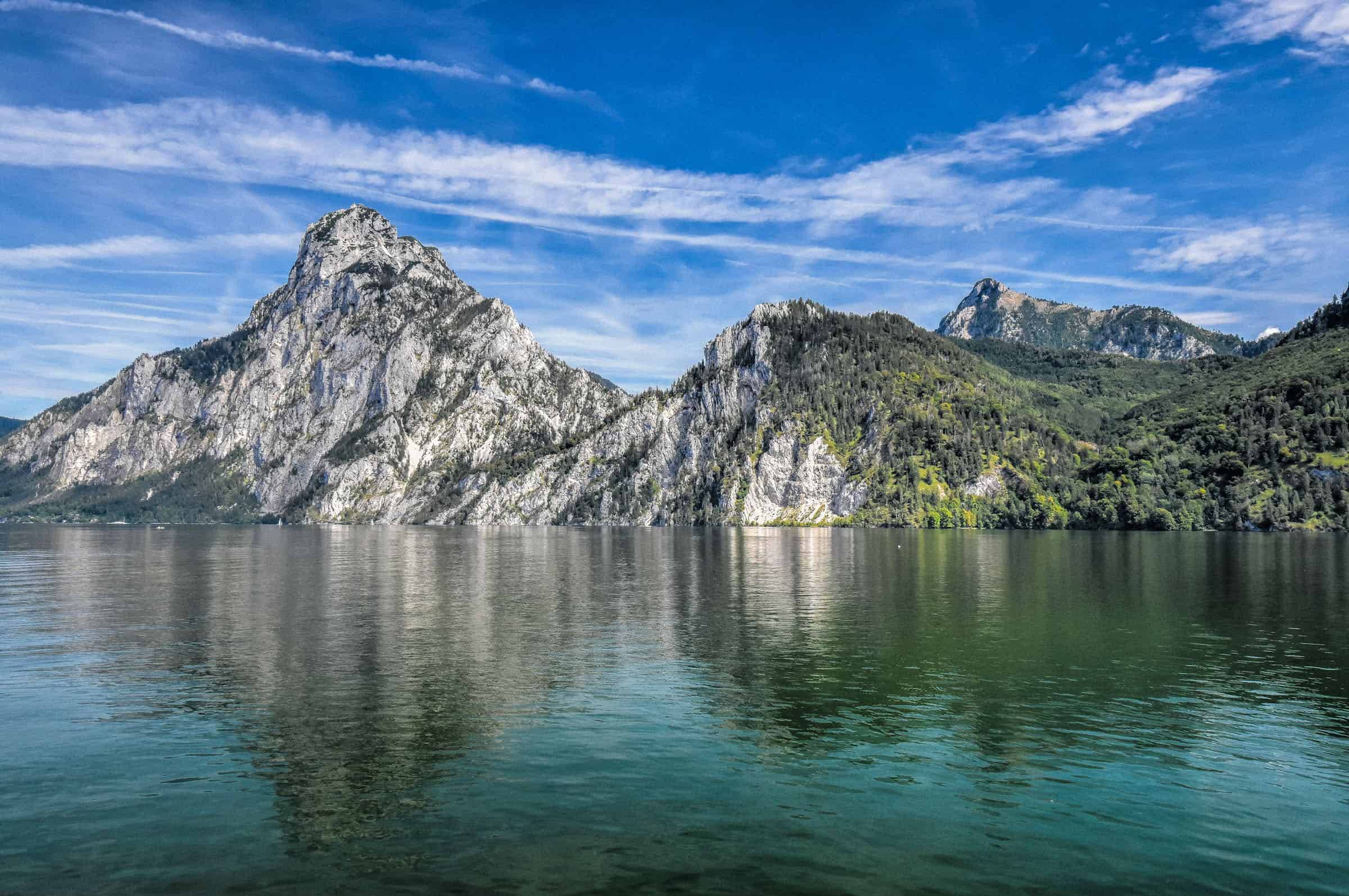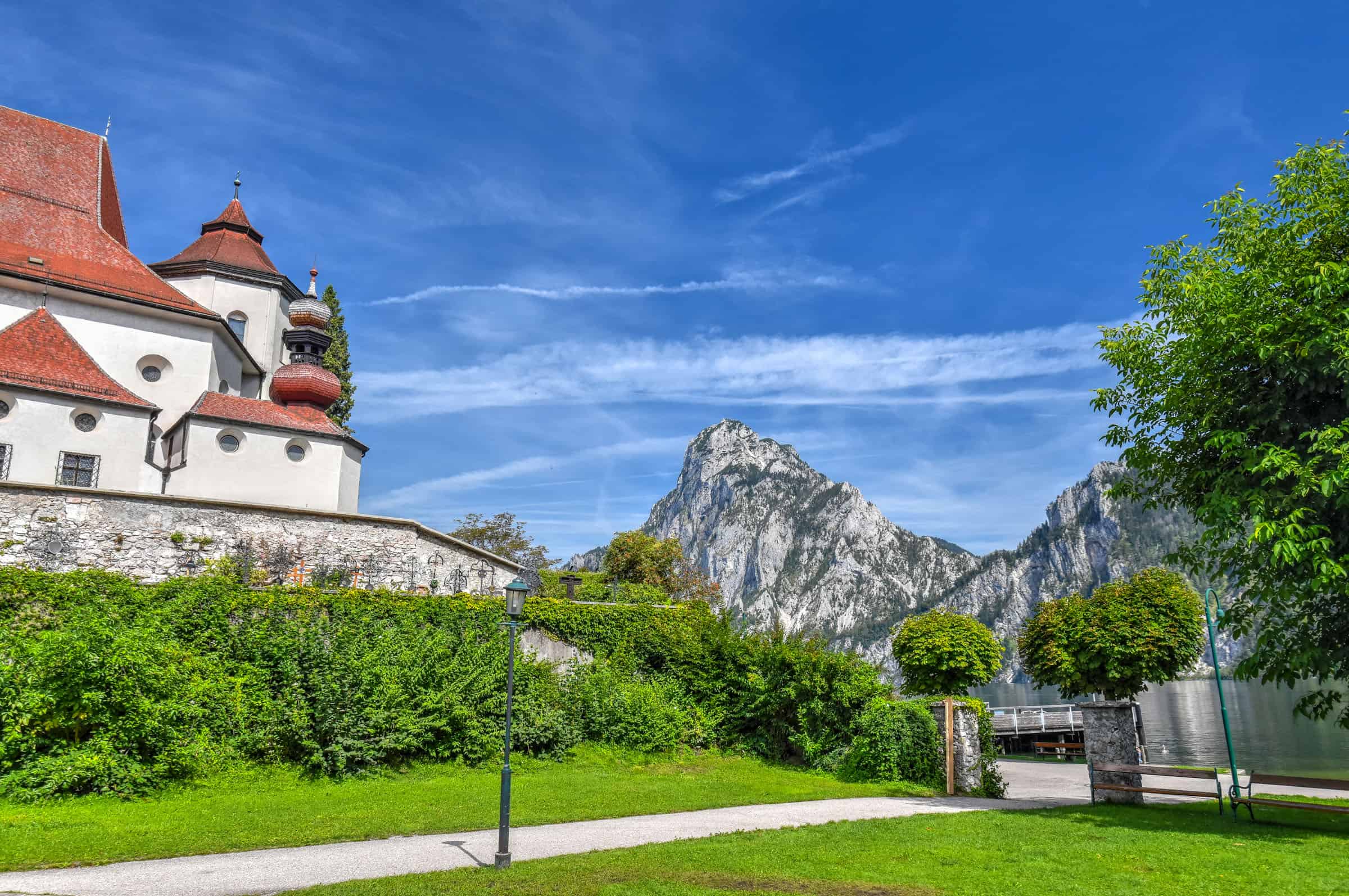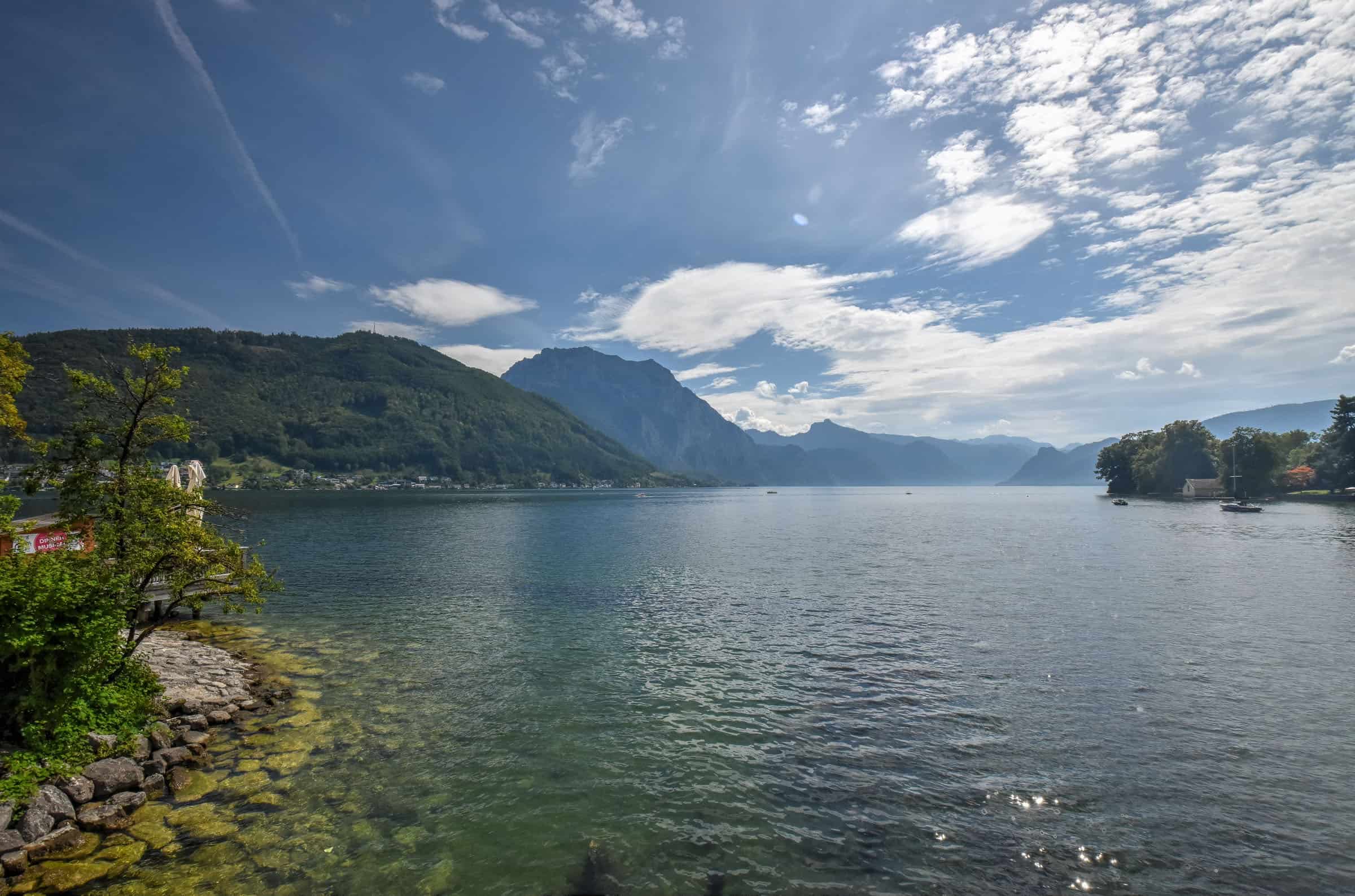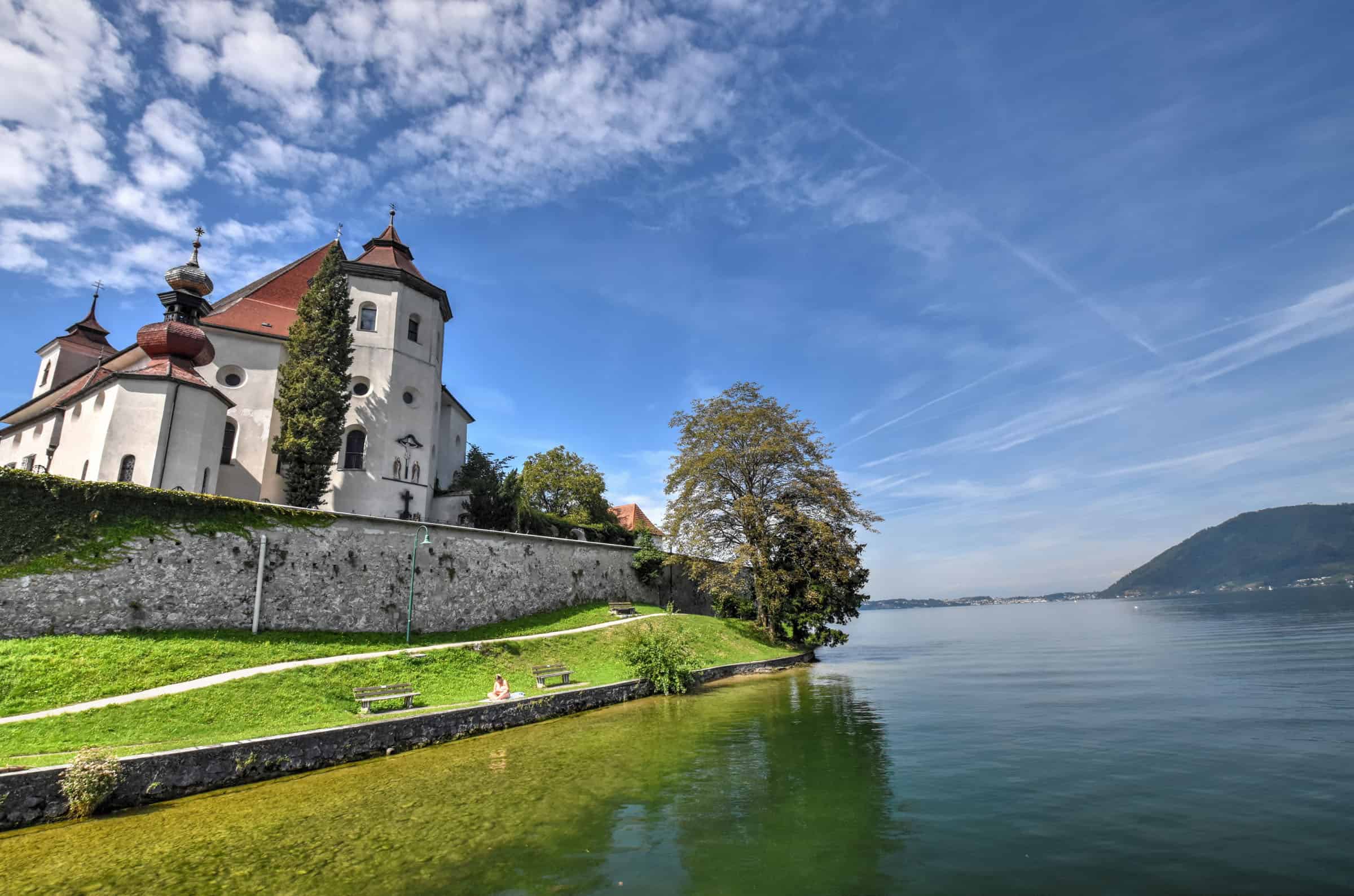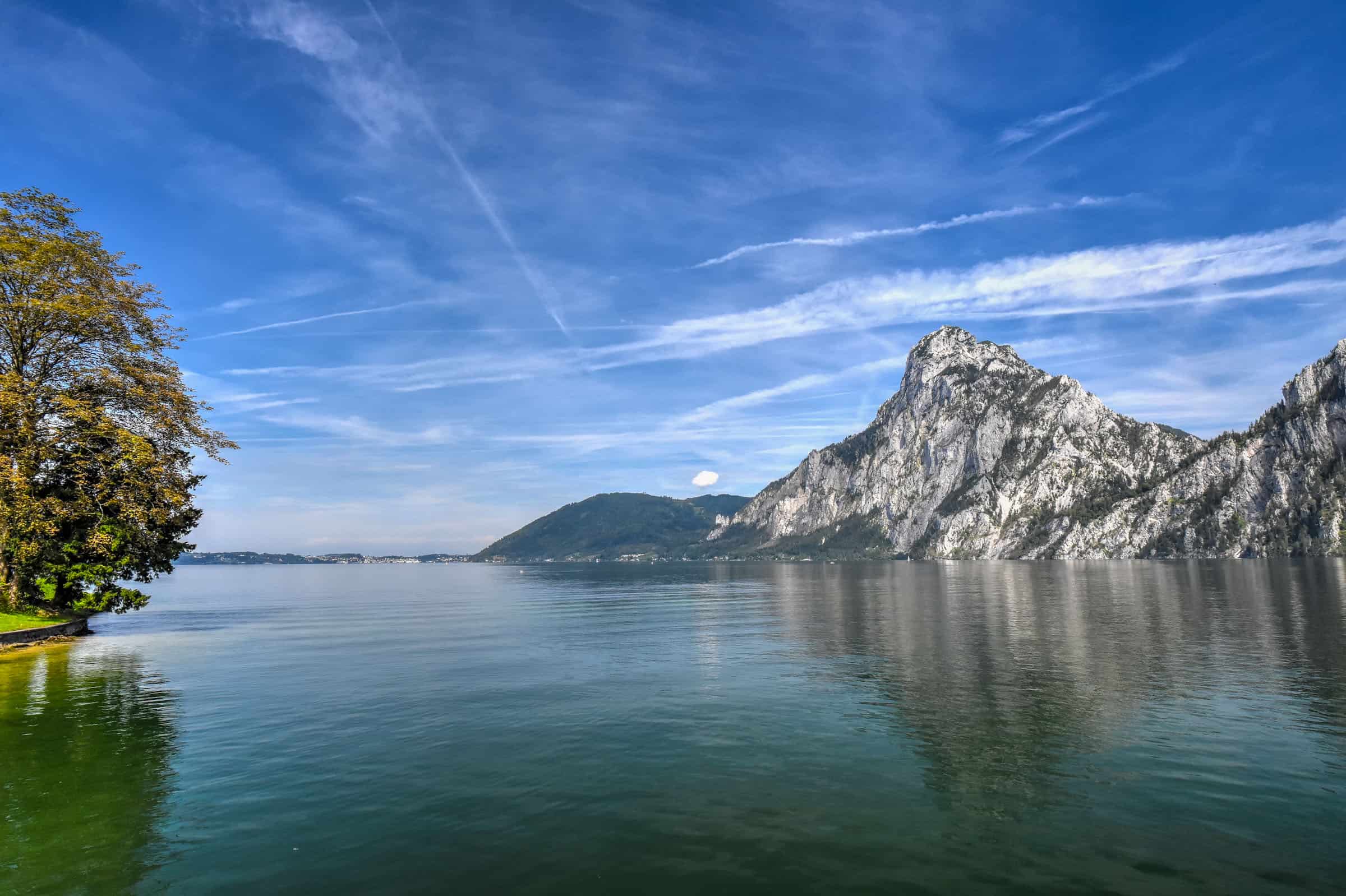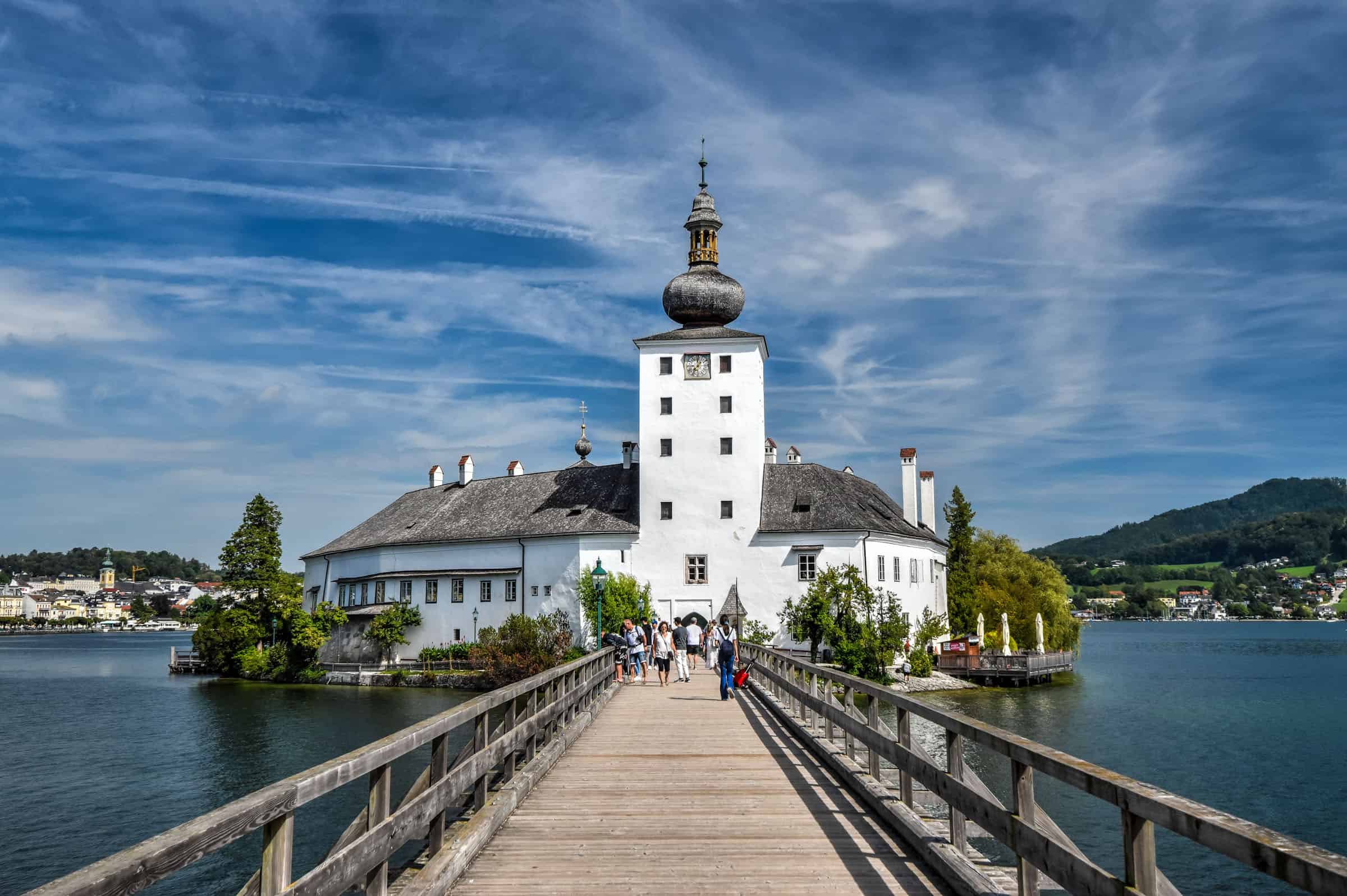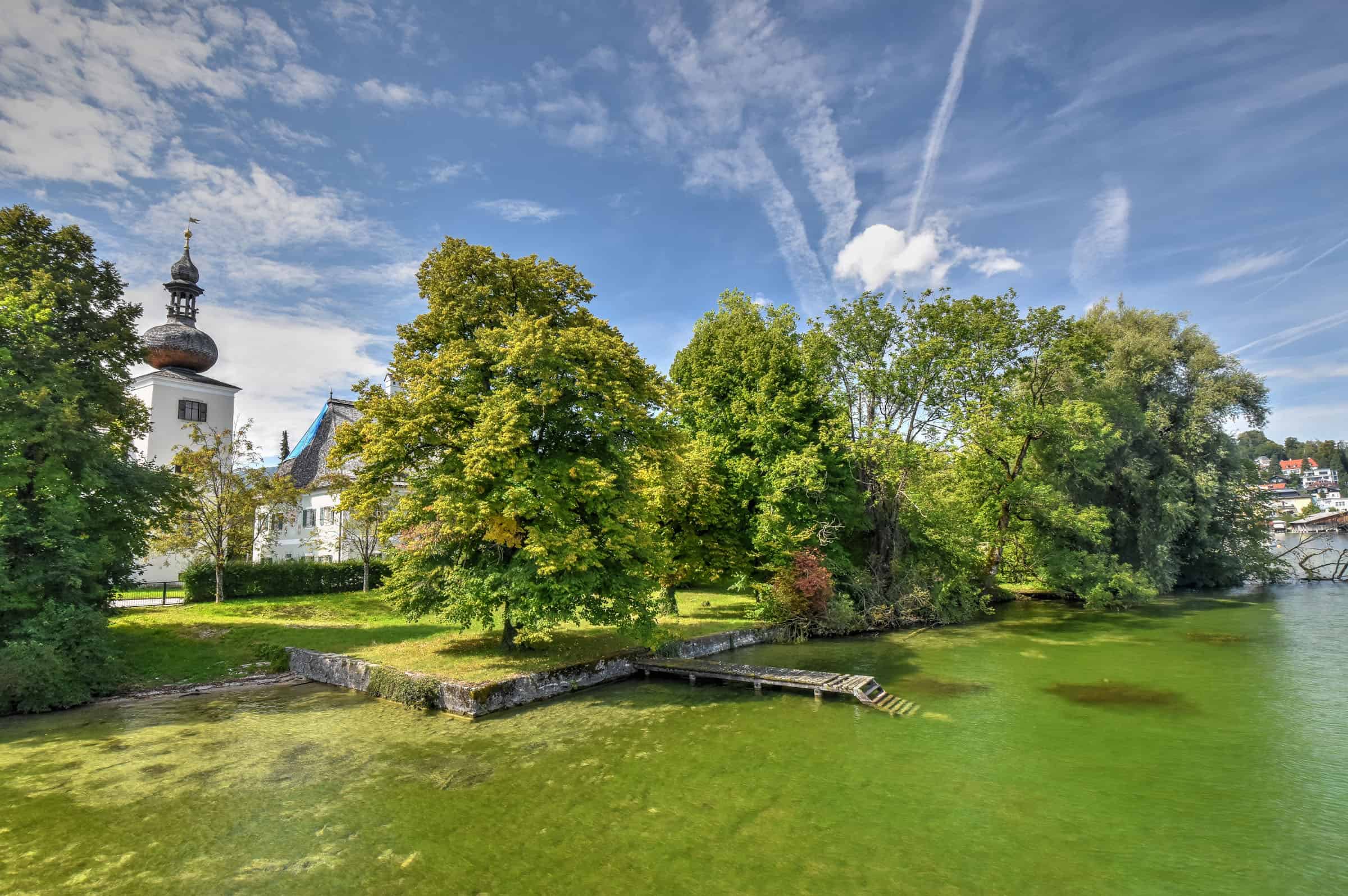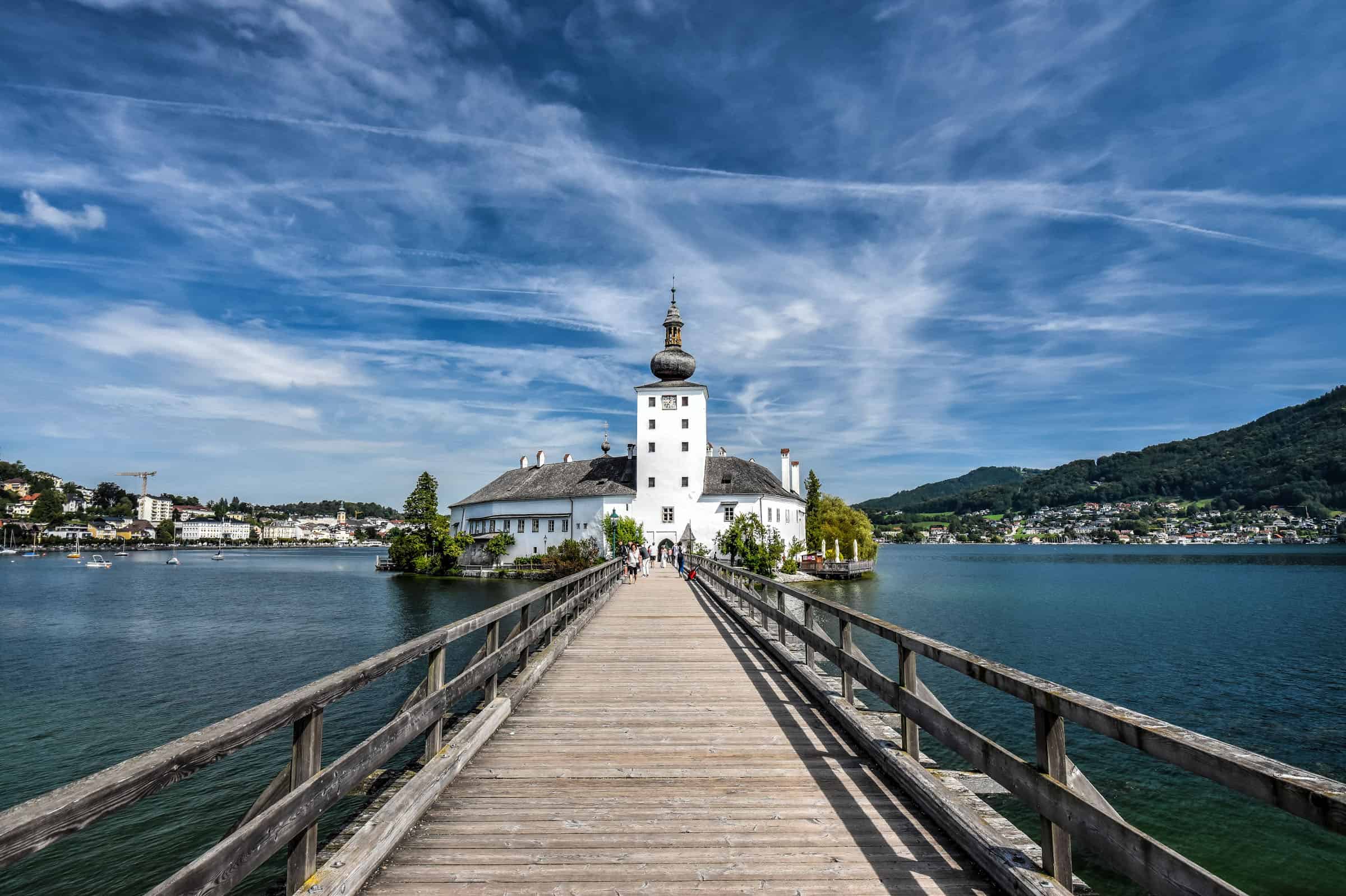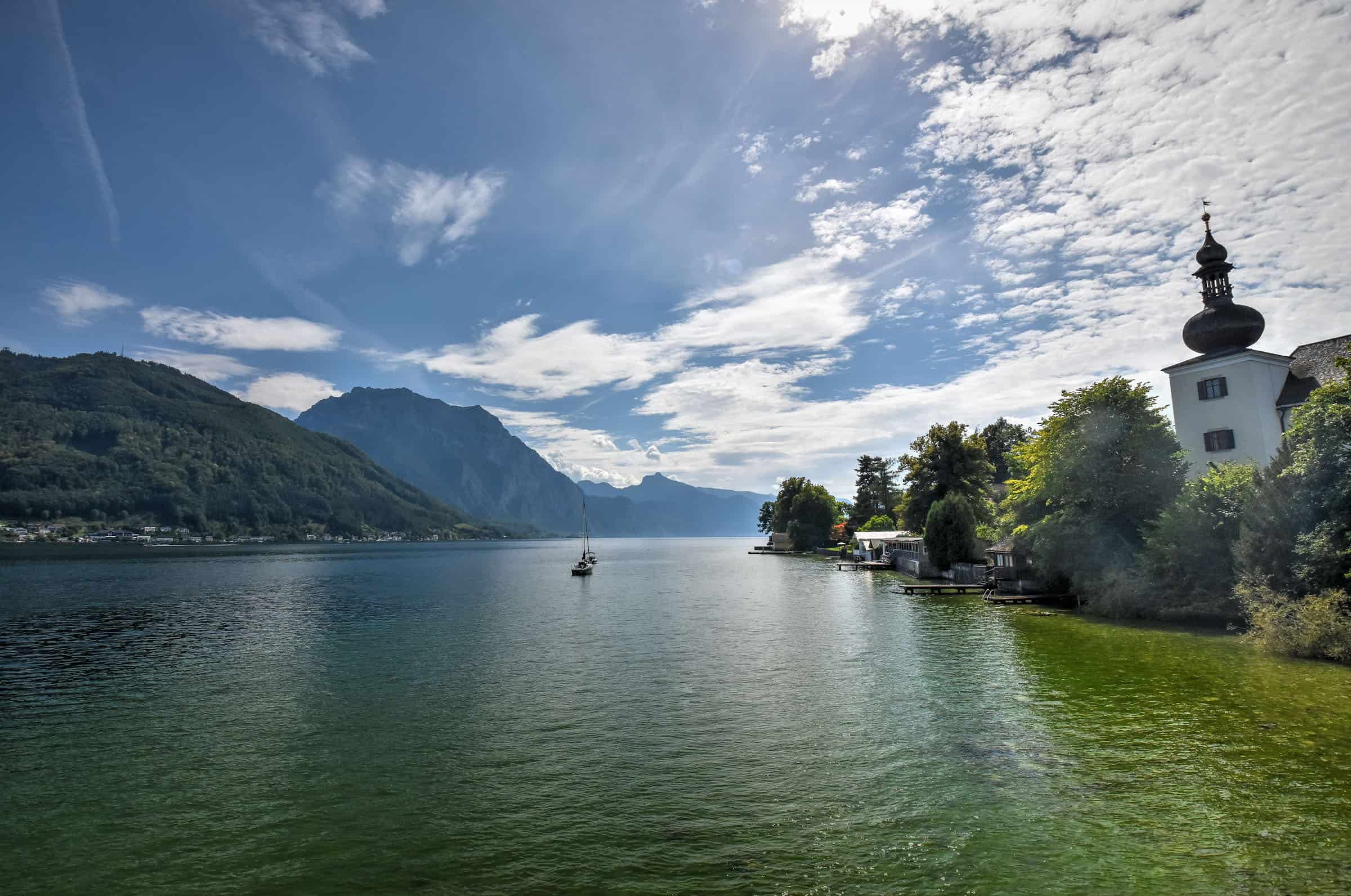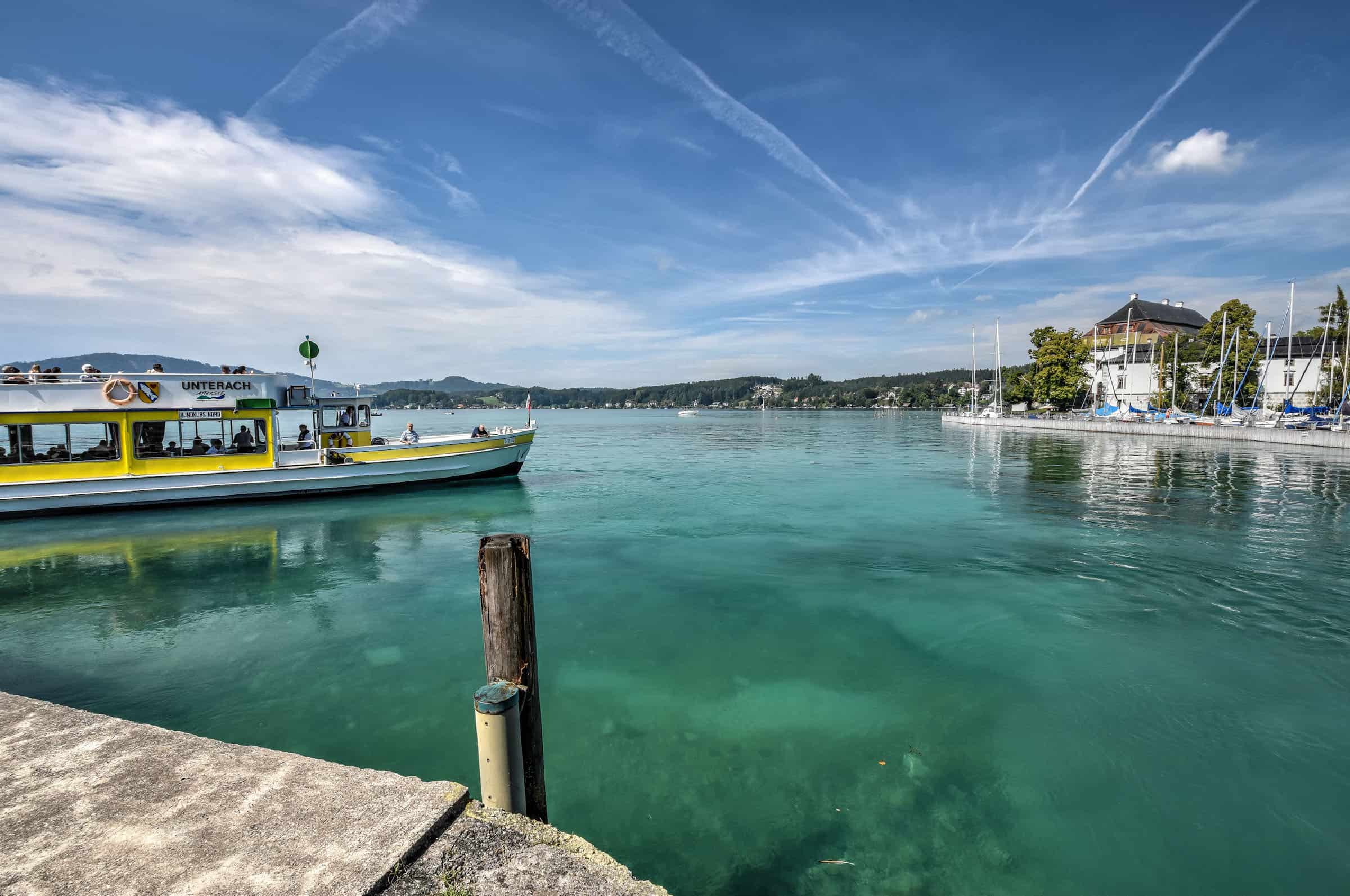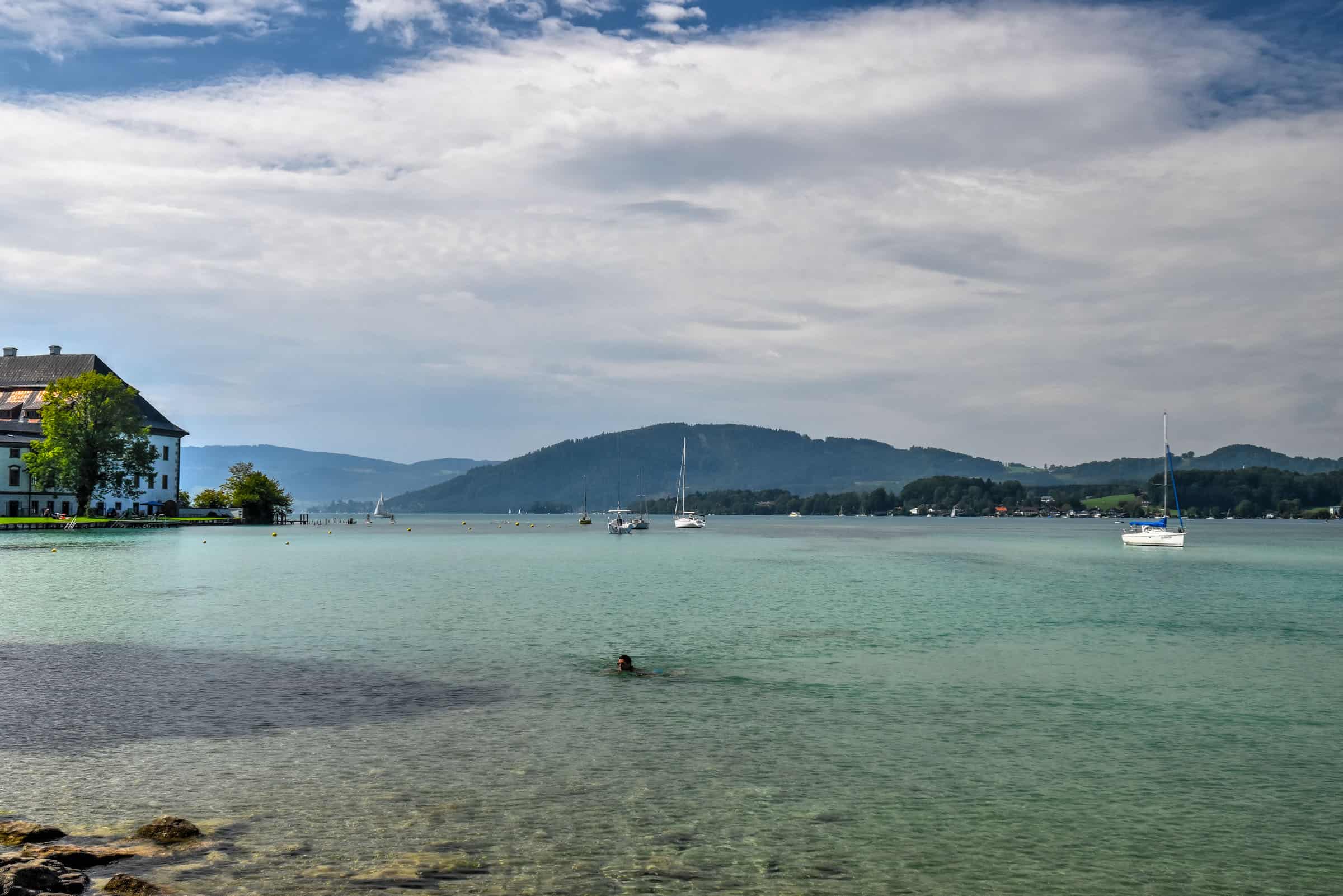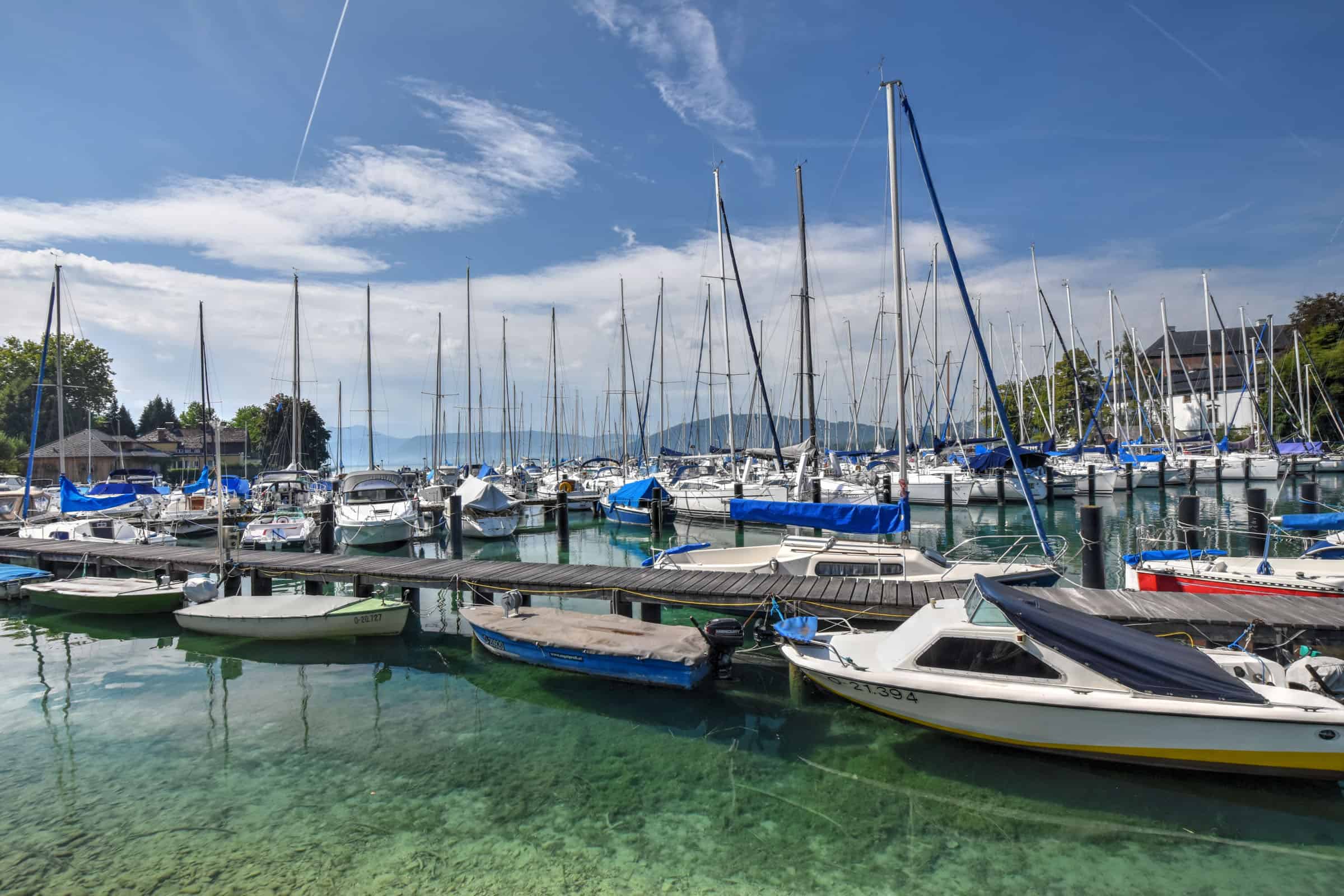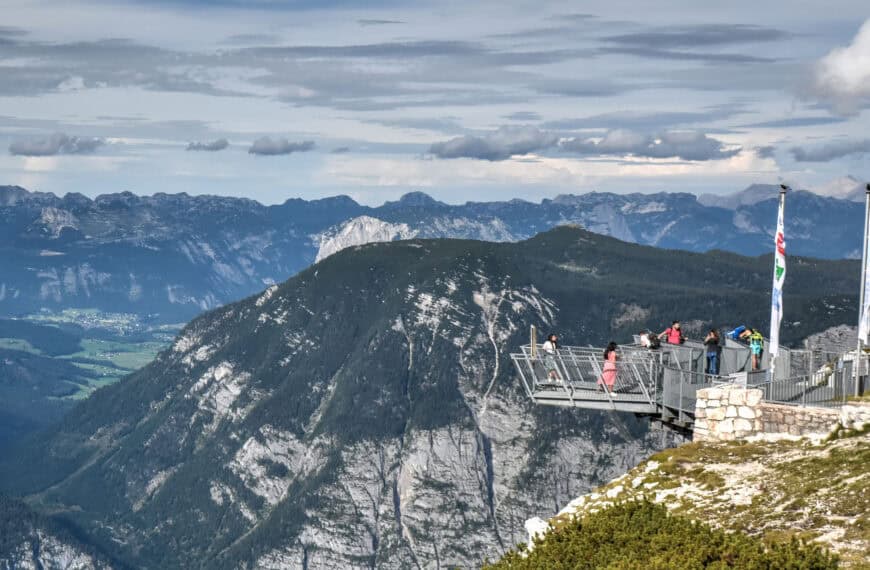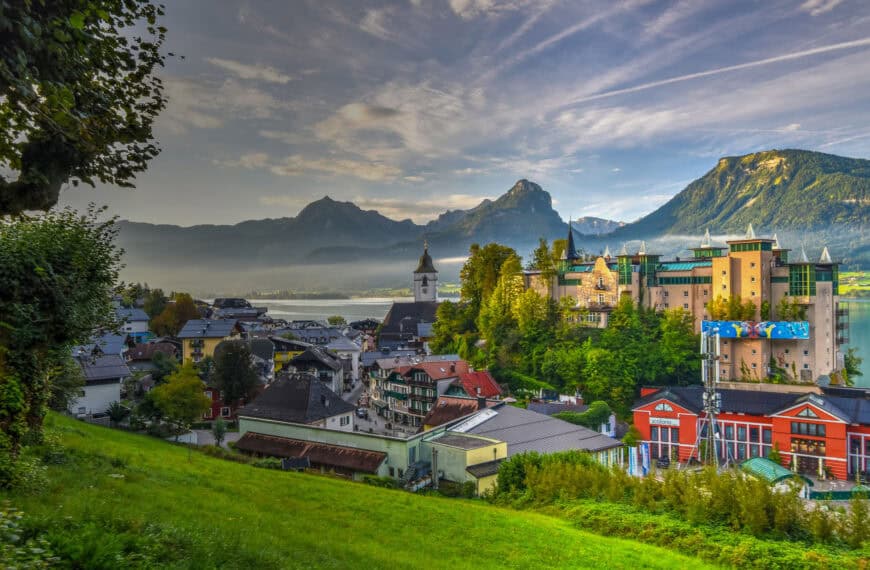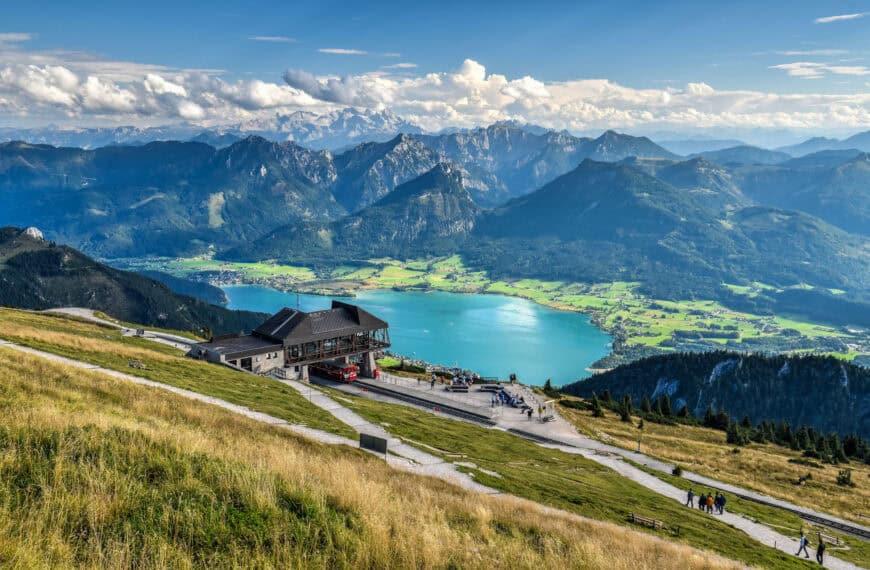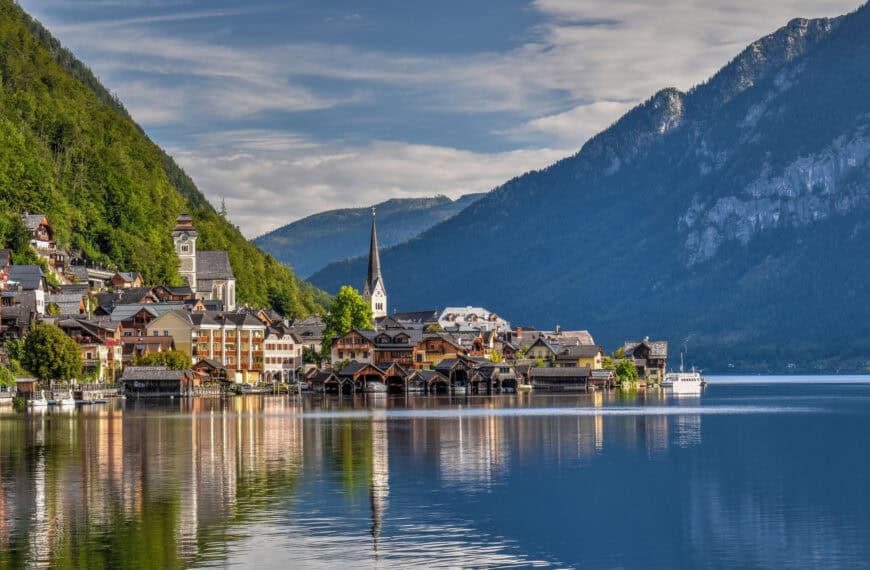The Salzkammergut region is without a doubt one of Austria’s most beautiful. It is home to a myriad of splendid subalpine lakes, each more beautiful than the next, set amongst towering mountains all around. Although the region can be explored by public transit, it is best suited for road trip exploration with your own vehicle, which will offer you more freedom and flexibility, and will allow you to venture into some of the more remote corners of the region. To help you plan your time in the area, we put together this travel guide on the Perfect Road Trip Itinerary in the Salzkammergut. We will focus on a 5-day itinerary but will also present additional ideas for those of you intending to spend more time in the region.
Disclosure: This page (Perfect Road Trip Itinerary in the Salzkammergut) may contain product affiliate links. At no additional cost to you, we may receive a commission for purchases made through these links. More details can be found on our disclosure and policies page.
You might also be interested in these pages:
Best Things to See and Do in the Salzkammergut
Best Things to See and Do in Salzburg
Best Things to See and Do in Hallstatt











Orientation – Salzkammergut Location & Map
The Salzkammergut region occupies an area of about 11.5 sq km, immediately east of Salzburg, Austria. Its western limits are very close to the German border, with Berchtesgaden National Park and the stunning Königssee on the other side.
The region isn’t however an official province of Austria. The map from the official Salzkammergut tourism website below approximates the region’s borders, as it spans parts of the Salzburg, Upper Austria and Styria provinces. Therefore, there is no exact definition regarding where the region starts or ends, and it is roughly centred around its largest town, Bad Ischl, known for its numerous spa resorts.

The Salzkammergut region is best explored by car in our opinion. Although there is public transit available, the routes are rather infrequent making it difficult to visit multiple attractions within a single day.
If you need to book a rental vehicle for your travels, we highly recommend using Discover Cars to get the best rates on your rental in Austria or Germany.
We also highly recommend Airalo (eSIM card) for your connectivity needs when travelling abroad. Airalo is the world’s first and largest eSIM store with eSIM plans for 200+ countries and regions worldwide.
Important: All Austrian motorways (“Autobahn”) and expressways (“S” roads) are subject to tolls. All cars, motorbikes and camper vans must either properly display a toll sticker or have purchased online a digital vignette when they plan to drive onto a motorway or expressway. Vignettes with periods of validity of 10 days, 2 months or 1 year are available from more than 6,000 outlets in Austria and neighbouring countries, and digital vignettes can be purchased from the ASFINAG website. They are not prohibitively expensive — for instance, the 10-day vignette for cars costs €11.50.
If you are staying in Salzburg and looking for day trip options, we recommend you check out our separate guide on the Best Day Trips from Salzburg. There is a fair bit of content overlap with the current page, but it is organized differently as attractions are grouped together by geographical location relative to Salzburg.
Alternatively, if you are limited on time or don’t plan on renting your own vehicle, joining an organized group tour could be a good idea. There are several great tours that explore the Salzkammergut region with departures from Salzburg:
If you are a fan of the Sound of Music, several great tours focus on sights and locations that were featured in the movie:
Where to Stay in the Salzkammergut
There’s no “best place to stay” in the Salzkammergut, as most lakeside towns would make a great choice. Some might prefer to stay in Salzburg and visit the area through a series of day trips, but that’s not an optimal strategy to minimize the amount of daily driving since the city is at the western end of the region. Many will choose to stay in Hallstatt given its popularity and sheer beauty, but it suffers from the same drawback as Salzburg, being located at the southeastern end of the region (albeit with several great attractions nearby such as the Gosau Lakes and Dachstein Krippenstein).
Our preference is to stay in St Wolfgang, along the northern shore of Lake Wolfgangsee. We have several reasons for preferring St Wolfgang as a base for exploring the Salzkammergut:
1) It’s a beautiful and scenic lakeside town, with a great selection of accommodation options and restaurants, but without the crowds of nearby Hallstatt and Salzburg. It’s also large enough to not feel too quiet.
2) The town is somewhat centrally located relative to our main interests in the area: Salzburg, Hallstatt, the Gosau Lakes, and Dachstein Krippenstein.
3) The base station of the SchafbergBahn cog train is located in St Wolfgang – riding this train to the summit of Schafberg mountain was very high on our bucket list.
4) Since we were planning to visit most of the area by car, the fact that parking is also easier in St Wolfgang (compared to Salzburg or Hallstatt) was an important consideration for our decision to base ourselves here.
Other popular areas used as a base for exploring the region include St Gilgen (western shore of St Wolfgangsee), Mondsee, and Bad Ischl (spa resort town).
Where to stay in St Wolfgang?
St Wolfgang is such a small town that there is no wrong area to stay in, and there are several options both within the town and outside of it for more tranquillity, depending on your preferences. These are in our opinion some of the best mid-range accommodation options in St Wolfgang:
SEE Moment Apartments – Fantastic and modern waterfront property with stunning views of Wolfgangsee
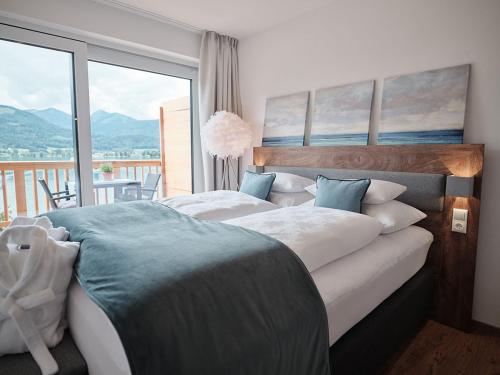
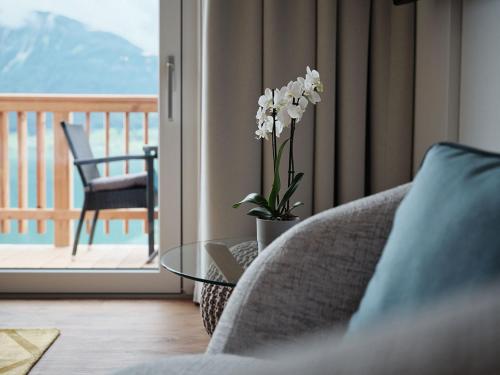
Hotel Zimmerbrau – Family-run hotel set in a 17th-century brewery with lake views

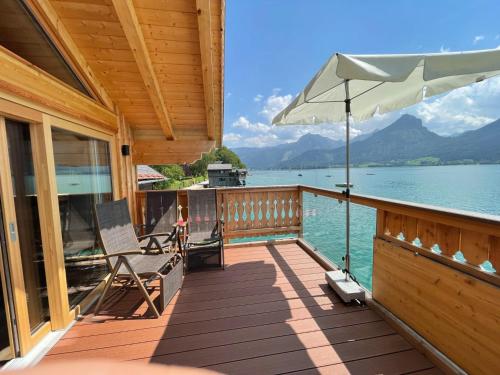
Hotel Seevilla Wolfgangsee – Warmly decorated rooms with lakefront views
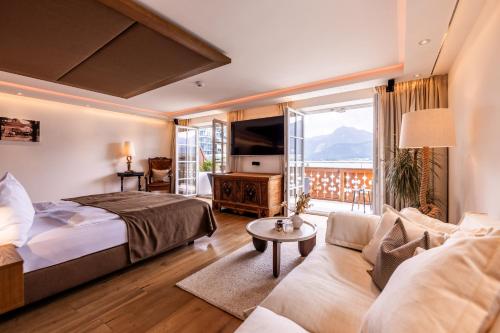
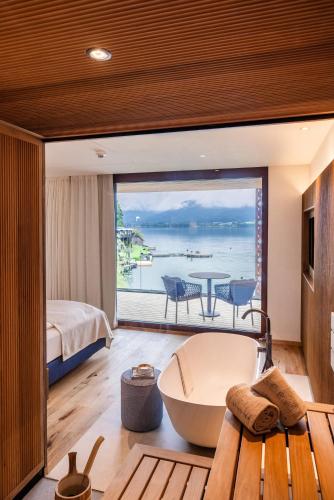
Landhaus zu Appesbach – A great lakefront property located in a converted private mansion


Best Time to Visit the Salzkammergut
Our favourite time of year to visit many places in Europe, and this includes the Salzkammergut, is during the after-summer shoulder season, primarily in September and October. The weather is usually still great without being too hot, the days are still relatively long and the lakes are still warm, and there are definitely fewer crowds than in the summer. Also, the price of accommodation and activities tends to be lower than during the high season. Alternatively, late April, May and early June are good times to visit, but you might find the lakes too cool for swimming if that’s an important activity for you.
That being said, the winter holiday season can also be a great time to visit even though some shops and attractions may be closed, as the scenery can be quite beautiful under a blanket of snow and several towns hold Christmas Markets typically from late November until just before Christmas.
How Long Do You Need in the Salzkammergut
It really depends on how much time off you have for your holiday and what else you want to see during your time in the Salzkammergut. To get a proper sense of everything the area has to offer, we think you should try to stay anywhere between 3 and 5 days. If you can only afford two days or less, that’s fine too. You’ll have time to see a few popular highlights and perhaps a few under-the-radar spots.
In the next section, we will start with our 5-day itinerary, but will also provide some suggestions afterwards for tweaking the itinerary for shorter and longer stays in the area.
The 5-Day Road Trip Itinerary
In this guide, we will focus on activities and sights that we think best fit into a 5-day itinerary. For a complete list of attractions in the Salzkammergut, we recommend that you check out our travel guide on the Best Things to See and Do in the Salzkammergut, where we cover additional places of interest. We also compare the different salt mines and ice caves you can visit in the Salzkammergut.
The following itinerary assumes you will have your own vehicle for getting around. Combining several attractions within the same day (as we propose) might prove to be more difficult by public transit. We also tried our best not to pack too much on any day without rushing you. We tried to put together this itinerary so that you could see a little bit of everything during your stay while leaving you with ample downtown each day.
Salzkammergut Day 1 Itinerary: St Wolfgang and the SchafbergBahn
Assuming you elected to base yourself in St Wolfgang it makes sense to start your itinerary here and give yourself a break from travelling around.
Located along the shores of Lake Wolfgangsee in the heart of the Salzkammergut, the small town of St Wolfgang deserves to be discovered. Though many come to town to experience the unique cog train (Austria’s steepest cog railway, the SchafbergBahn — more on the cog train below) that whisks passengers to the summit of Schafberg Mountain, there’s so much more to experience in St Wolfgang. In particular, it has a beautiful, colorful and lively town center filled with cafés, shops and restaurants, but without the crowds of Hallstatt, and has several beautiful lakeside walking trails. It’s also a great place to go on a short boat cruise and visit other towns around Lake Wolfgangsee, such as St Gilgen.






For more information and tips on visiting St Wolfgang, check out our travel guide on the Best Things to See and Do in St Wolfgang.
Austria’s steepest cog railway has been running from St. Wolfgang up the Schafberg since 1893. The train will climb 1,190 vertical meters at a maximum gradient of 26%, and the ride to the summit will take approximately 35-40 minutes. For most of the ride up, you will have stunning views of Wolfgangsee and towering mountain ranges on the other side of the lake. From the summit, you essentially have 360-panoramic views of the Salzkammergut mountains and lakes (you can see at least 5 of the major Salzkammergut lakes), not to mention the iconic summit view of the sheer drop off Schafberg’s northern face.





For information on riding the cog train to the Schafberg summit, check out our Schafbergbahn Travel Guide.
Salzkammergut Day 2 Itinerary: Hallstatt
The picture-perfect postcard village of Hallstatt is located in the southeastern corner of the Salzkammergut. Although it can get overcrowded at times, it remains nonetheless a must-visit destination in our opinion — early mornings and evenings can be quieter making it more likely that you will enjoy a fun stroll through this historic small town. And even if it does get too crowded, there are plenty of activities where you can somewhat escape the crowds, such as visiting the world’s oldest salt mine, spending some time on the lake, or heading down the road to Dachstein Krippenstein, a mountain where several great surprises await including a unique ice cave and a stunning viewing platform (though we reserved visiting Krippenstein on a separate day in our itinerary – see below).





For more information and tips on visiting Hallstatt, check out our travel guide on the Best Things to See and Do in Hallstatt.
Salzkammergut Day 3 Itinerary: Gosau Lakes and Dachstein Krippenstein
We suggest spending your morning in the beautiful Gosau Lakes Area. These stunning lakes (often referred to as Gosauseen) are one of few exceptions in the Salzkammergut: most lakes have roads along at least one of the shores but here there are no such roads, only hiking trails, providing you with a much more serene lakeside experience. There are several options here including just looping around the first lake or a longer out-and-back trail with more elevation gain that takes you past three lakes. The area was definitely one of the most beautiful we visited in the Salzkammergut region, let alone Austria. The lakes are also a popular destination for Via Ferrata amateurs, swimmers, divers and those who want to explore the largest of the three lakes by pedal boat paddle board.





For more information on the beautiful alpine lakes and hiking in the area, check our Gosau Lakes Hiking Guide.
In the afternoon, head to the nearby Dachstein Krippenstein mountain to explore an ice cave and enjoy stunning panoramic scenery from a unique viewing platform. If you want to see more of Hallstatt this is a good day to do it, as you pass by the idyllic lakeside village on your way from Gosau to Krippenstein.
Once you reach the base of the Krippenstein, you’ll need to take a cable car up to the Dachstein Giant Ice Cave (first stop) and to the 5 Fingers viewing platform (second stop). We recommend starting with the Dachstein Giant Ice Cave, which is one of the few places on Earth where tourists can easily access a giant-sized ice cave. The first sections of the Ice Cave were discovered in 1910 and tourist access began only 2 years later. The ice in the cave is formed by water seeping from the Dachstein plateau down into the cave through various small cracks. When outside temperatures are above freezing the caves still contain really cold air, so the penetrating water freezes and forms rather splendid ice shapes. Although some water flow in the summer is warm enough to produce slight melting, it actually balances the winter growth, enabling a cycle of slight melting with growth that guarantees the survival of this magnificent natural phenomenon.





For more information on this attraction, check our Travel Guide on visiting the Dachstein Ice Cave.
After you visit the ice cave, head back to the cable car to get to the 5 Fingers viewing platform. The platform is a short 20-minute easy hike from the second mountain station and offers an incredible adrenaline rush as you lean over a 500m drop below you. Built in 2006, as its name suggests, the platform is shaped like a hand with 5 fingers that protrude from a sheer rock face at an altitude of 2108 meters above sea level. It offers breathtaking views of the Salzkammergut region from above Lake Hallstatt and the Krippenstein Mountain Range.





For more information on this attraction, check our Travel Guide for Visiting the 5 Fingers Viewing Platform.
Salzkammergut Day 4 Itinerary: Salzberg
Given Salzburg’s proximity to the Salzkammergut, it definitely makes sense to visit this historic baroque town during your stay in the region. While many visit the Salzkammergut as day trips from Salzburg, many others do the opposite and visit Salzburg as a day trip from their base in the Salzkammergut.
Tucked away between scenic alpine landscapes near the German border and UNESCO-listed since 1997, the city has what many think is the best-preserved Baroque Altstadt (old town) and one of Europe’s best-preserved medieval castles towering above it. From the Sound of Music to Mozart’s childhood, the city has a rich cultural history and plenty of stories to share. Although the historic old town is fairly compact, it’s packed with attractions, museums and things to do. You can easily spend a full day here, if not more. The castle alone is worth a few hours.






For more information and tips on visiting this beautiful city, check out our travel guide on the Best Things to See and Do in Salzburg.
Salzkammergut Day 5 Itinerary: Hellbrunn Palace Hohenwerfen Castle, and Werfen Ice Caves.
This day takes you south of Salzburg to visit several different attractions. First up (the closest to Salzburg) is Hellbrunn Palace (Schloss Hellbrunn), an impressive Baroque palace that took only three years to build, from 1612 to 1615, which was exceptionally fast for the early 17th century. As impressive as the palace is, the main draw here is the immaculately maintained garden and its “surprising” fountains. The gardens are not only filled with stunning and intricate water fountains but they hide within them several trick fountains that only shoot out water once in a while to surprise the unsuspecting visitor! The trick fountains were conceived by Prince-Archbishop Markus Sittikus (the same man behind the palace’s construction) and intended as a series of practical jokes to be performed on guests.





Next head south to Werfen to visit Eisriesenwelt, the largest ice cave in the world, one that extends for more than 42 km. The cave is open to visitors from early May until the end of October, and a visit to the cave can easily be made on the same day as Hohenwerfen Castle. The car park is about 5 km from the castle, but from there you will have to walk 20 minutes along a trail to reach a cable car station. After a 3-minute ride up, you will have to walk another 20 minutes to reach the cave entrance, from where you will begin your 70-minute guided tour. For more information and advanced booking, you can consult the cave’s official webpage. Unfortunately, photography isn’t permitted inside the Werfen Ice Cave, so to get a glimpse of what to expect here’s the Werfen Ice Cave’s official video:
Finally, end your day with a visit to one of Austria’s most impressive castles, Hohenwerfen Castle, set high up on a rocky hill surrounded by towering mountains on all sides. We found it to be an absolutely stunning castle to visit. Hohenwerfen is generally considered a “sister castle” of Salzburg’s Hohensalzburg Castle as both castles were built in the 11th century by the Archbishops of Salzburg. The castle served various purposes throughout its history, from a primary residence to a hunting lodge, and from a military base to a prison. Unlike Hohensalzburg Fortress in Salzburg which is primarily visited through self-guided tours, here in Hohenwerfen Castle the official guided tours are a must as they are the only way to see the castle’s interior and to get detailed explanations about the castle’s rich history.
Another unique feature of the castle visits is the falconry demonstrations that are performed twice a day: professional falconers demonstrate the impressive practice of hunting with trained birds of prey. There is also a falconry museum on site.





For more information and tips on visiting this area of the castle, check out our travel guide on Austria’s Must-See Hohenwerfen Castle.
Salzkammergut Itinerary Tweaks and Alternatives
If you have less than 5 days
Choosing what activities and attractions to sacrifice really depends on your personal preferences. Here are a few different options for how you can combine attractions if you only have fewer days in the area.
Option 1: Spend only half a day in Hallstatt (morning) and spend the afternoon exploring Dachstein Krippenstein. Then on another day combine a visit to the Gosau Lakes (morning) with a visit to Hellbrunn Palace and Hohenwerfen Castle.
Option 2: Spend only half a day in St Wolfgang and spend the other half visiting Hellbrunn Palace and Hohenwerfen Castle. This option might be ideal for those choosing to stay in St Wolfgang since you will likely be spending many of your evenings there.
Option 3: If you are more keen to spend time in the countryside than in a large town like Salzburg, only spend half a day there and then head south to visit Hellbrunn Palace and Hohenwerfen Castle.
Option 4: If you are not keen on spending time hiking, skip the Gosau Lakes and Dachstein Krippenstein Day.
If you have more than 5 days
Option 1: If you are a history buff and/or love Baroque architecture, there’s plenty to keep you busy for 2 or 3 days in Salzburg. Even if you are not based in Salzburg, you might want to consider making two day trips there.
Option 2: Discover some of the lesser-known and smaller lakes of the Salzkammergut. These include Grundlsee, and Altausseer See, both of which are a short distance east of Hallstatt, and Fuschlsee, which lies between Salzburg and Wolfgangsee. Altausseer See is the smallest of the three and has a beautiful walking path that loops around the lake, which can be completed in about 75-90 minutes. Lake Altaussee is also suitable for ice skating and curling during the colder months, as it often freezes over completely in winter. An interesting anecdote is that the lake and the hunting lodge Seewiese were filming locations for the James Bond film Spectre in 2015. A popular intermediate-sized lake is Mondsee, north of Wolfgangsee and west of Attersee, where you will a beautifully preserved old town and one of the most stunning churches in the Salzkammergut, the Abbey Church of Mondsee.
Option 3: We only pencilled in half a day at Dachstein Krippenstein, but you could easily spend nearly a full day there given the great hiking options. See our 5 Fingers platform guide for more details.
Option 4: We only pencilled in half a day at the Gosau lakes, but you can easily spend the day here. After you hiked around the lakes, you can enjoy some time on the water, do a via Ferrata course, or take a cable car up to Zwieselalm, a 1500m high plateau that makes for great hiking through beautiful alpine meadows in the summer. See our Gosau Lakes guide for more details.
Option 5: Visit one of the locations described in the next section below, “Things to See on Your Way in or out of the Salzkammergut”.
Things to See on Your Way in or out of the Salzkammergut
If Travelling from/to the North or East
Two of the largest lakes in the Salzkammergut are located in the northeastern corner of the region, which makes them great to explore either on your way in or out from that direction.
Traunsee
The drive along the lake’s western shore is quite scenic as the lake is backdropped by beautiful mountains, including the imposing Traunstein. The lake itself is the deepest and by volume the largest lake located entirely within Austria.





At the northern of the lake lies the town of Gmunden, which has a small historical town center. It’s also from where you take a cable car to visit the Baumwipfelpfad Salzkammergut on Grünberg mountain, a tree-top path and 39-meter high observation tower, one which you can ride down from through its 75-meter-long tunnel slide.
Also located near the northern end of the lake is Schloss Ort. It was founded by Hartnidus of Ort around 1080 and is one of the oldest buildings in the Salzkammergut. It was built on a small island connected to the mainland by a 123 m footbridge. Today it is one of the most popular wedding venues in Austria.





Attersee
Traunsee may be the deepest lake, but Attersee is the largest lake by surface area located entirely within Austria. It’s also one of the few lakes of the Salzkammergut that has roads that fully encircle the lake (along with Mondsee) – you can loop around the lake without stopping in about an hour. The drive is slightly more scenic along the eastern side as the road hugs the shoreline more closely and there are a few more roadside car parks to stop and enjoy the view. There’s also an Alpaca farm that you can visit along the eastern shore.



Most of the main attractions are towards the northern end of the lake, however, such as the Gustav Klimt Center. The center honours the famous Austrian painter Gustav Klimt, who from 1900 to 1916, regularly spent his summers along the shores of Attersee. The center focuses on Gustav Klimt’s life and work in this region. Beyond the center, you can enjoy a pleasant stroll around the nearby boardwalk and visit Klimt’s old family home.
If Travelling from/to the West
Given the Slazkammergut’s proximity to the German border, you can easily visit the stunning Königssee on your way in or out of the Salzkammergut if you are coming from or heading to Germany. Alternatively, it can also make for a great day trip destination from the Salzkammergut (the lake is only a 35-minute drive from Salzburg).
Königssee is often considered Germany’s most beautiful alpine lake. Located in nearby eastern Bavaria just across the border, it is definitely reminiscent of a Norwegian fjord due to its elongated shape and being nestled between towering mountains. A fun hour-long ride on electric-powered boats will take you across the lake to its southern point, from which you can undertake a relatively easy hike around the scenic Obersee (a beautiful small lake south of Königssee), through cattle pastures and eventually to Germany’s tallest waterfall, Röthbachwasserfall. If that wasn’t enough, you can also visit a stunning old pilgrimage church from the late 17th century, St Bartholomew, which can only be visited by boat (or via a very long hike) along the lake’s scenic western shore.





For more information and tips on visiting the beautiful surroundings of Königssee, check out our travel guide on Hiking to Obersee with a Königssee boat Tour.
Planning a Trip to Austria?
You might be interested in these pages (coming soon):
Best Things to See and Do in the Salzkammergut
Perfect Road Trip Itinerary in the Salzkammergut
Best Things to See and Do in Salzburg
Best Things to See and Do in Hallstatt
We also highly recommend these guidebooks:
Rick Steves Vienna, Salzburg & Tirol
Lonely Planet Austria
Photography Gear
If you like our photography, you might be interested in some of the gear we use to shoot our travel and hiking destinations.
Camera Body – Nikon Z 6ii Fx-series Mirrorless Body
Main Lens – NIKON 24-120mm F/4G ED VR AF-S
Zoom Lens – Sigma 745-306 150-600mm f/5-6.3
Polarizing filters – Urth Circular Polarizing (CPL)
Camera Tripod – K&F Concept 64-inch Camera Tripod
Mini-tripod – Lammcou Flexible Camera Tripod
Camera/hiking backpack – Vanguard Alta Rise 48 Backpack
Universal Travel Adapter – VYLEE Universal International Power Travel Plug
Other Travel Essentials
Travel Insurance
SafetyWing is a travel insurance company that offers comprehensive coverage for travellers. Includes Medical Insurance and Travel Insurance. Primarily geared towards long-term travellers, digital nomads, and expats.
e-Sim cards
Airalo is the world’s first and largest eSIM store with eSIM plans for 200+ countries and regions worldwide. With Airalo eSIMs, travellers can get connected the moment they land at their destination and avoid nasty data roaming charges
eSIMS are a sustainable alternative to single-use SIM cards – they are 100% digital, require less energy to produce and be re-used rather than disposed of.
Car Rentals
Discover Cars is our go-to website for car rentals. We almost always find our preferred rate there.
Transfer from Airport
Welcome Pickups is our favourite private transfer service, which you can pre-book at a fixed price. Currently available in 220 cities all over the world (mostly in Europe, but with several major cities in Asia, the Middle East and the US).
Kiwitaxi is another private transfer service – we haven’t tried it yet, but it’s currently available in a few more countries (102 as of 2024).
Hotels and Accommodations (coming soon)
Photography Prints
If you found this blog useful, you can help support our blog by purchasing low-cost digital prints. Printed physical prints are also available for purchase.








—–
Well, that wraps it up! We hope you enjoyed our Guide to the Perfect Road Trip Itinerary in the Salzkammergut and that it will prove useful for planning your trip.
—–
You might also be interested in these related pages:
